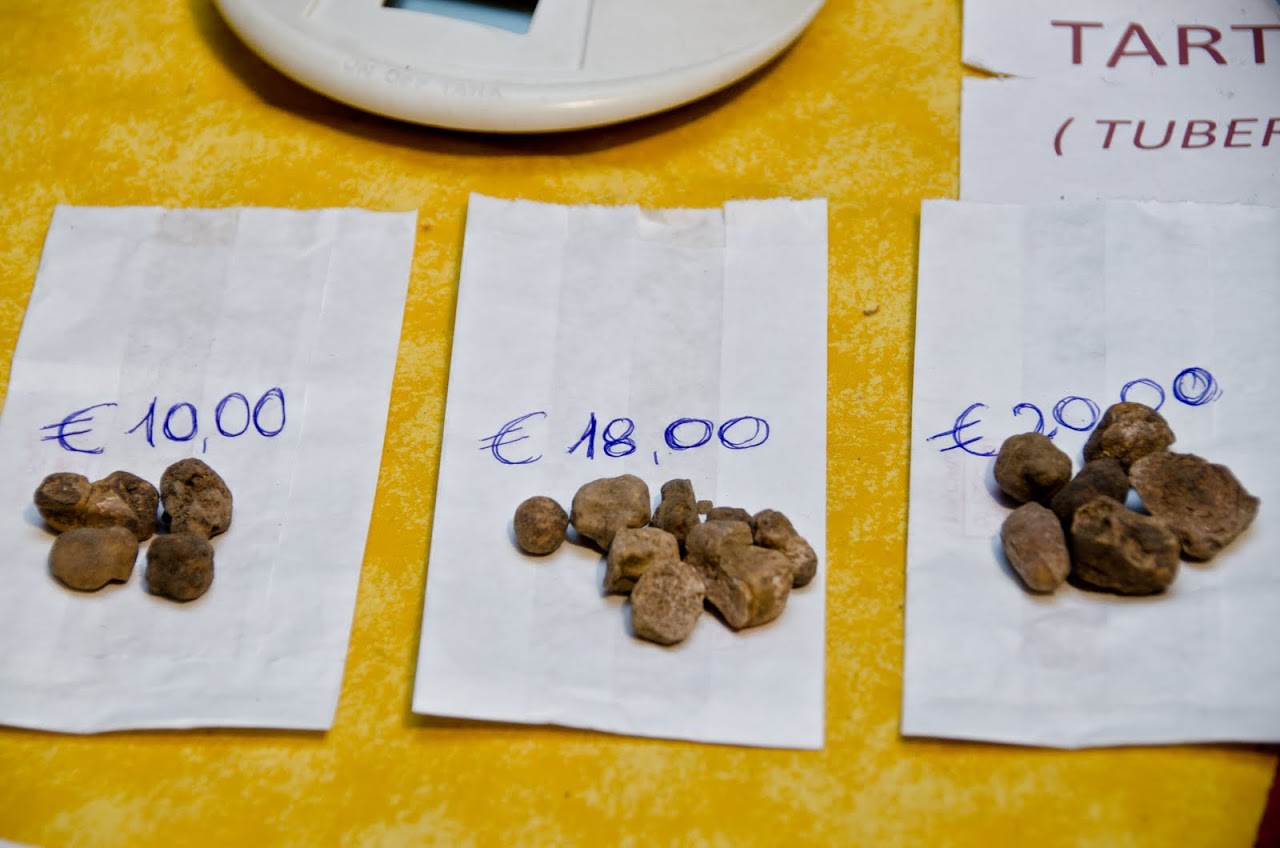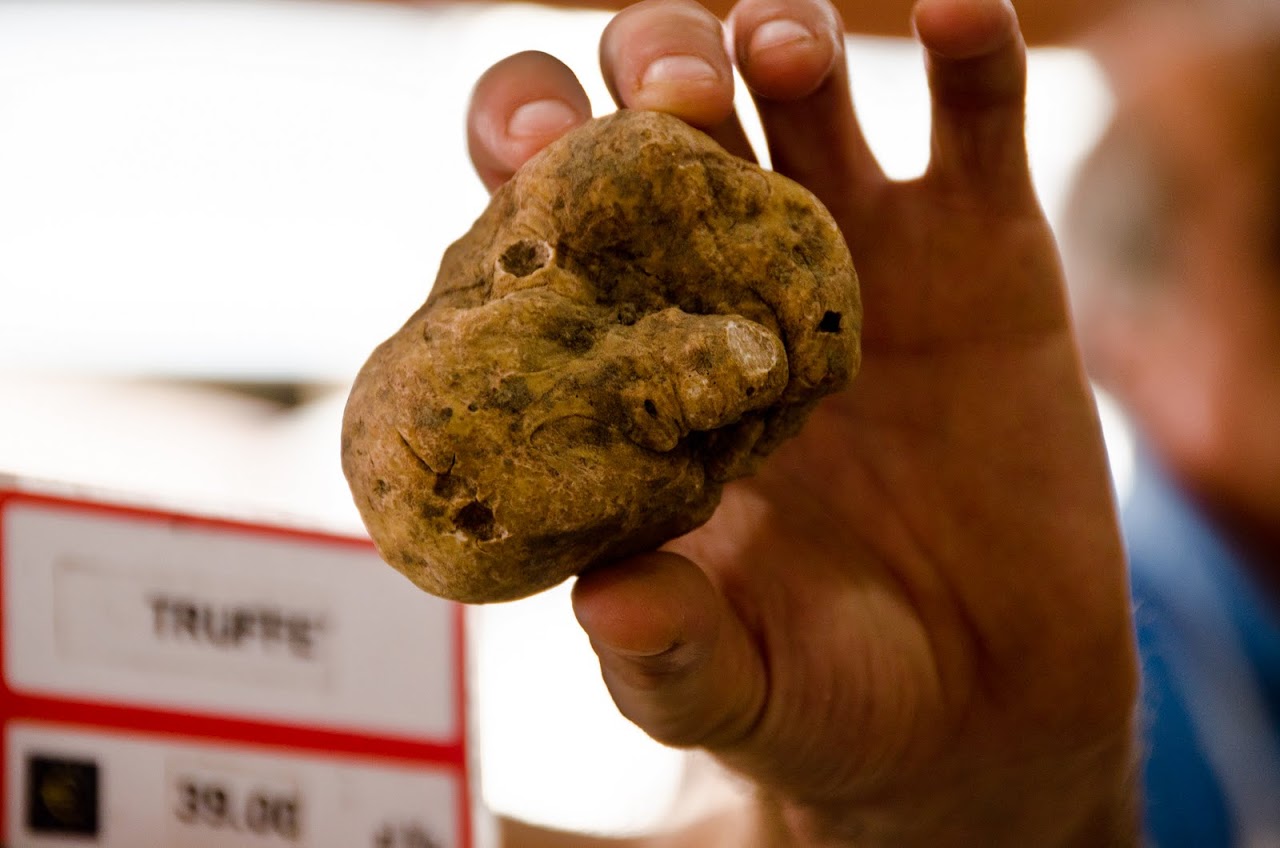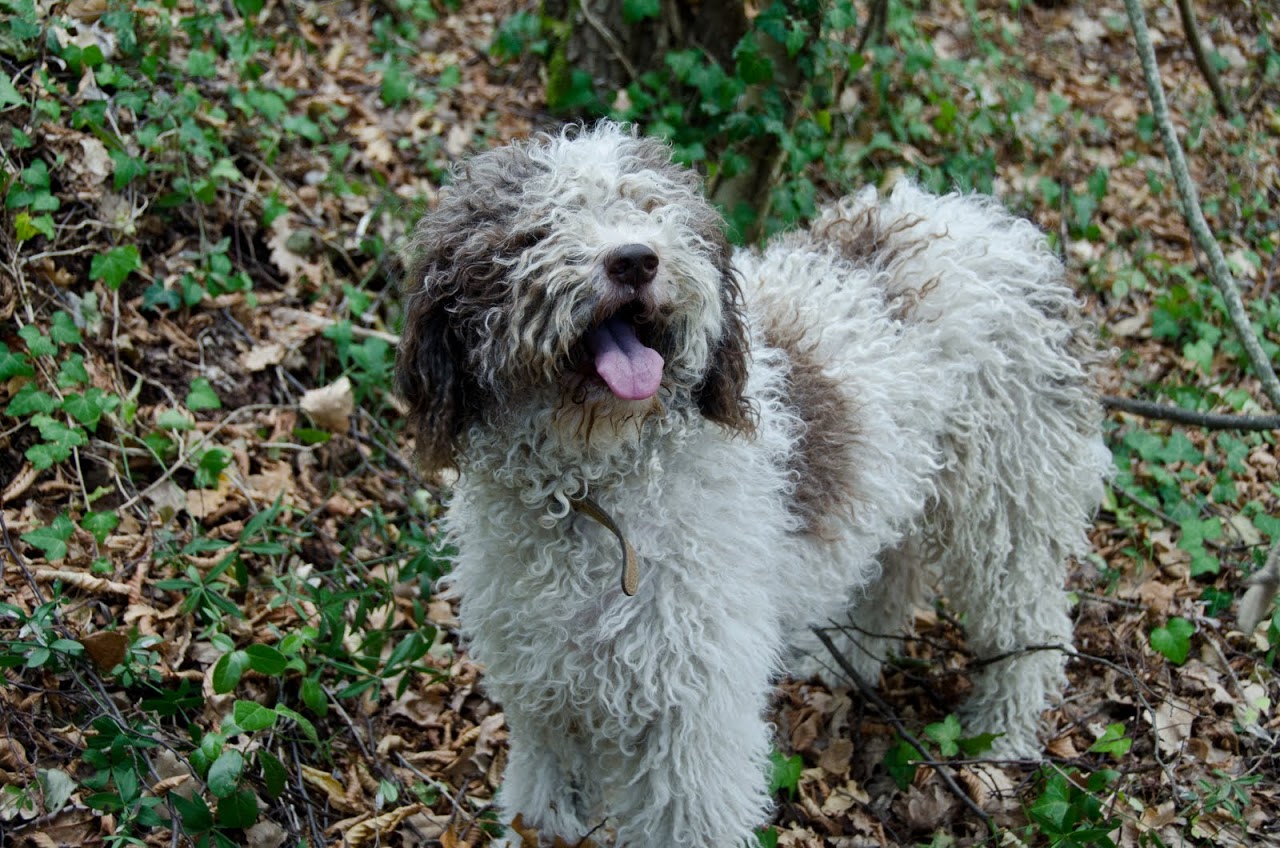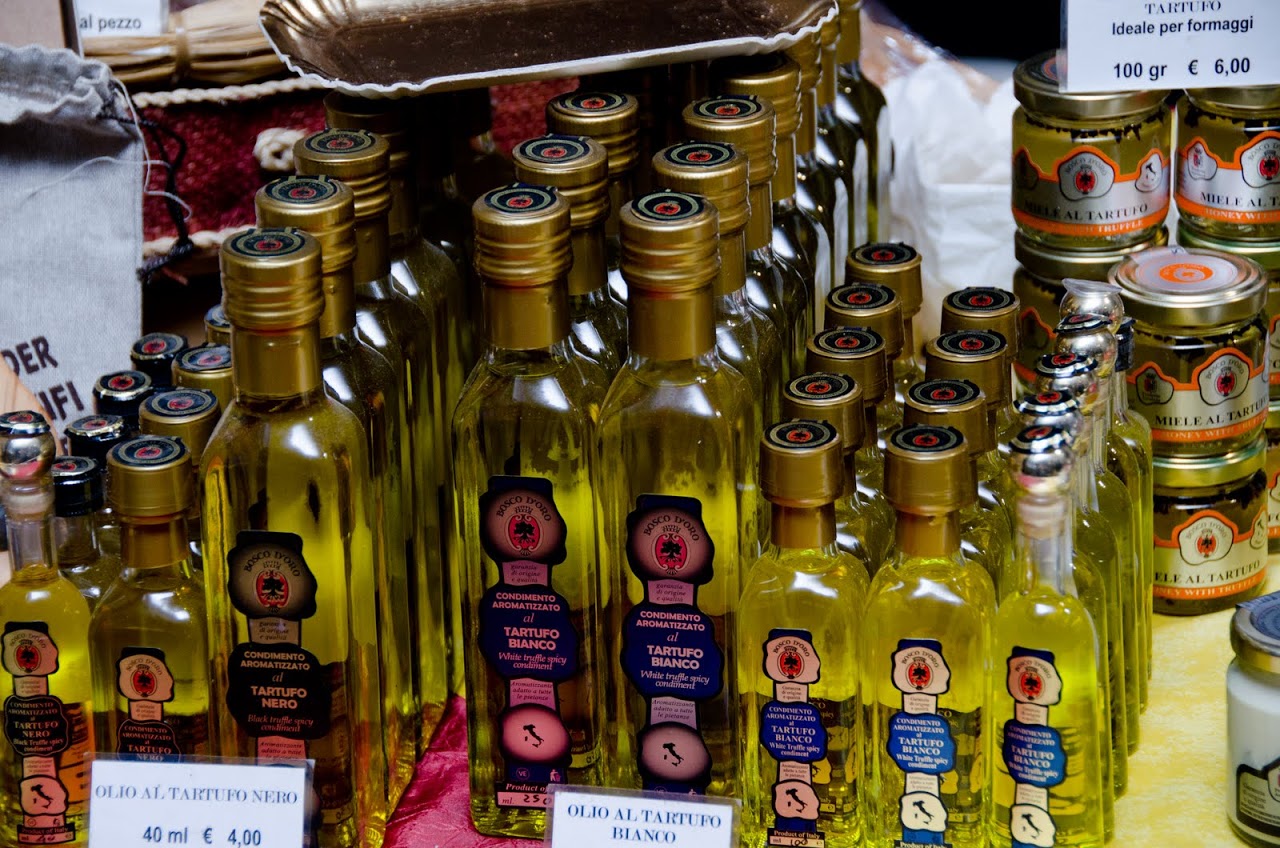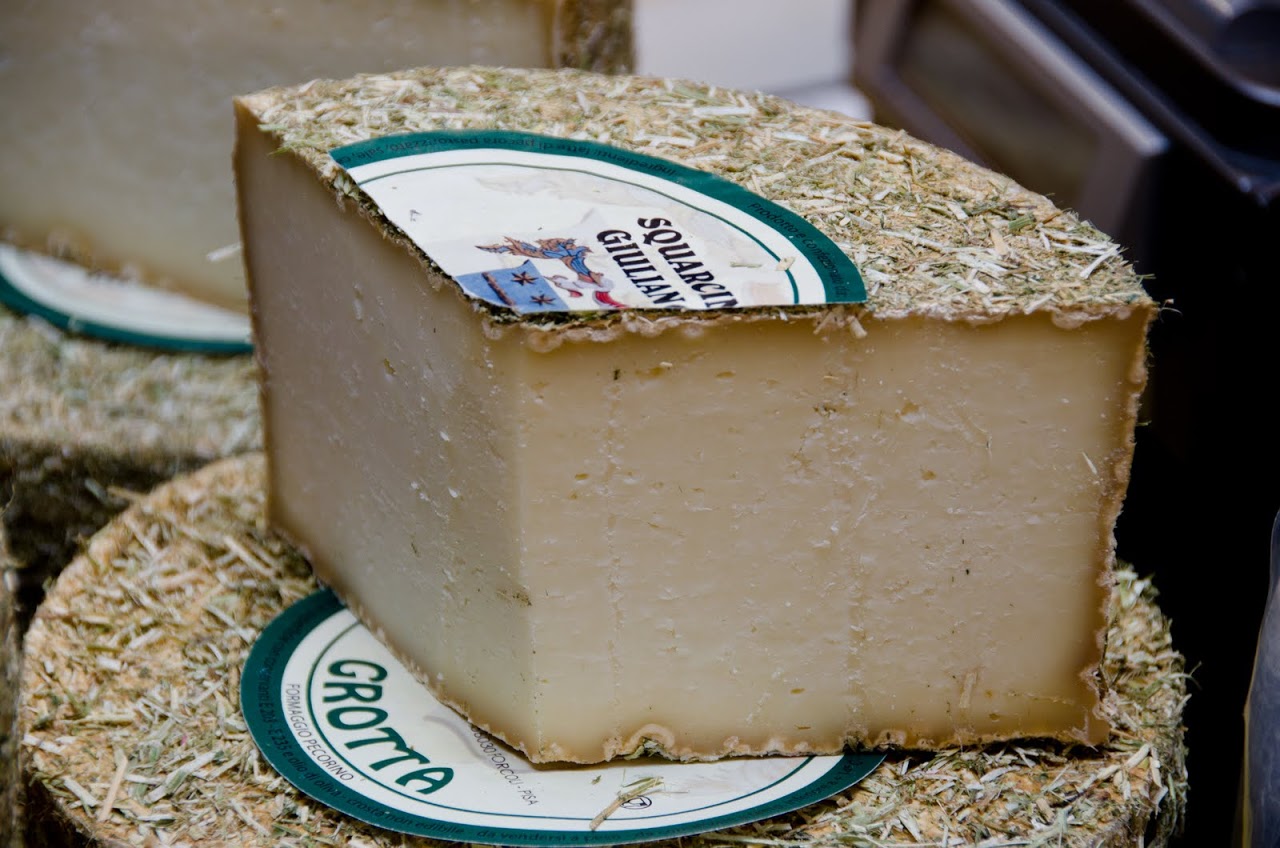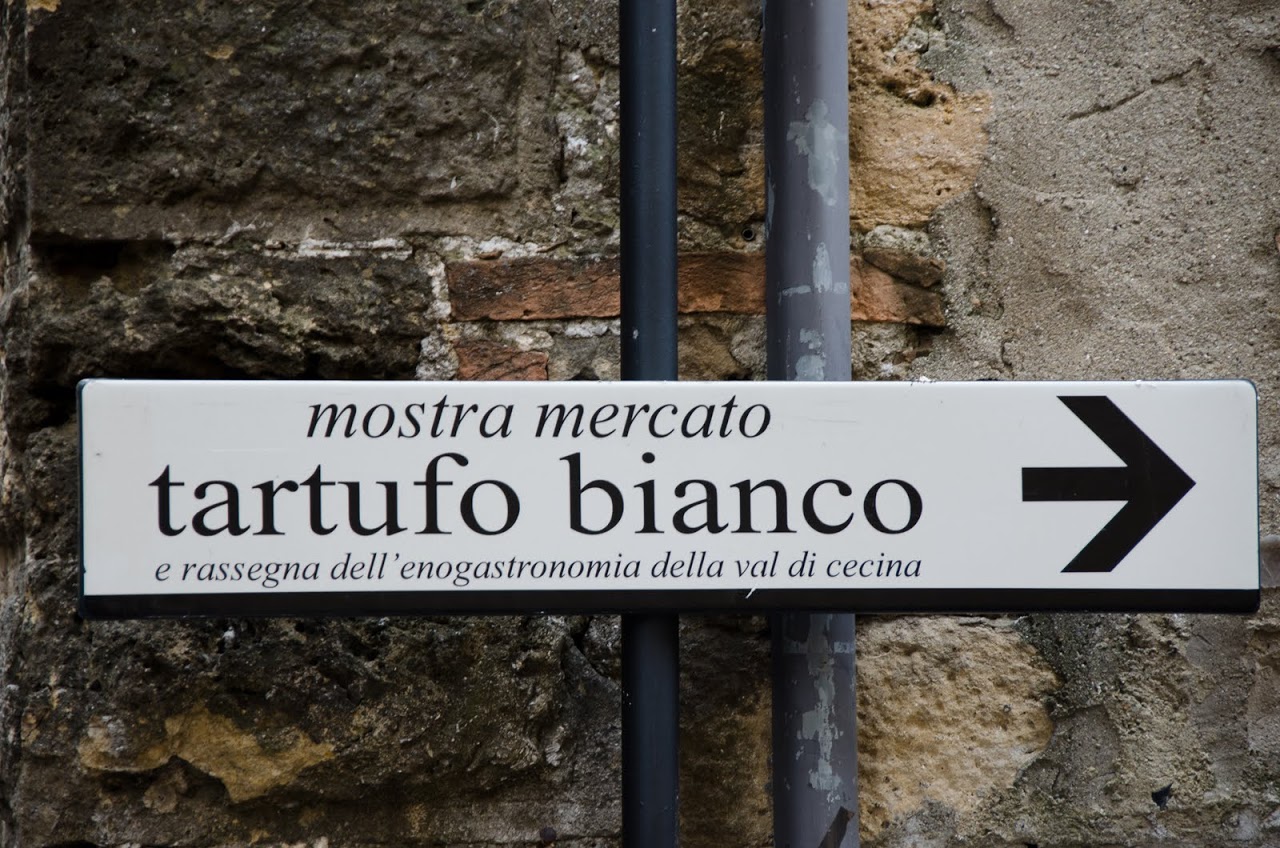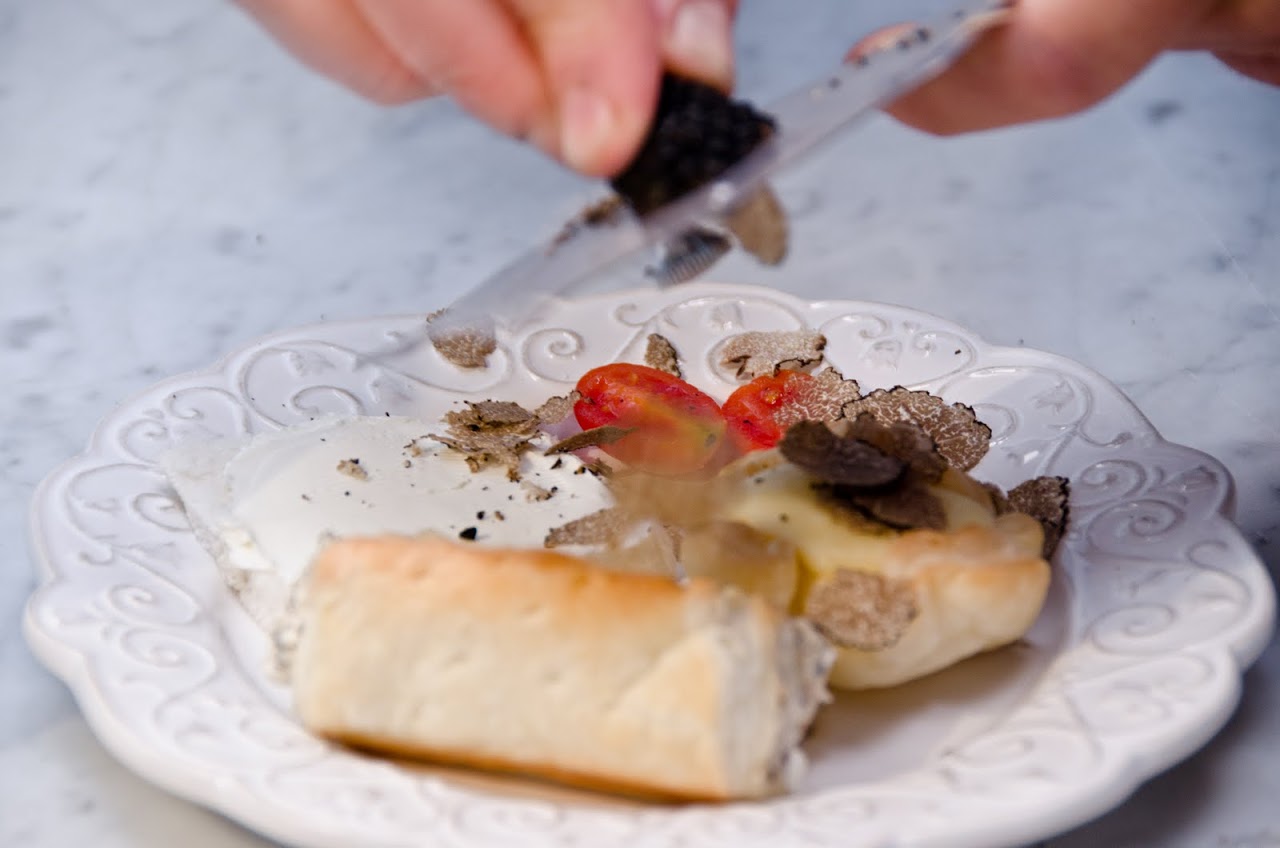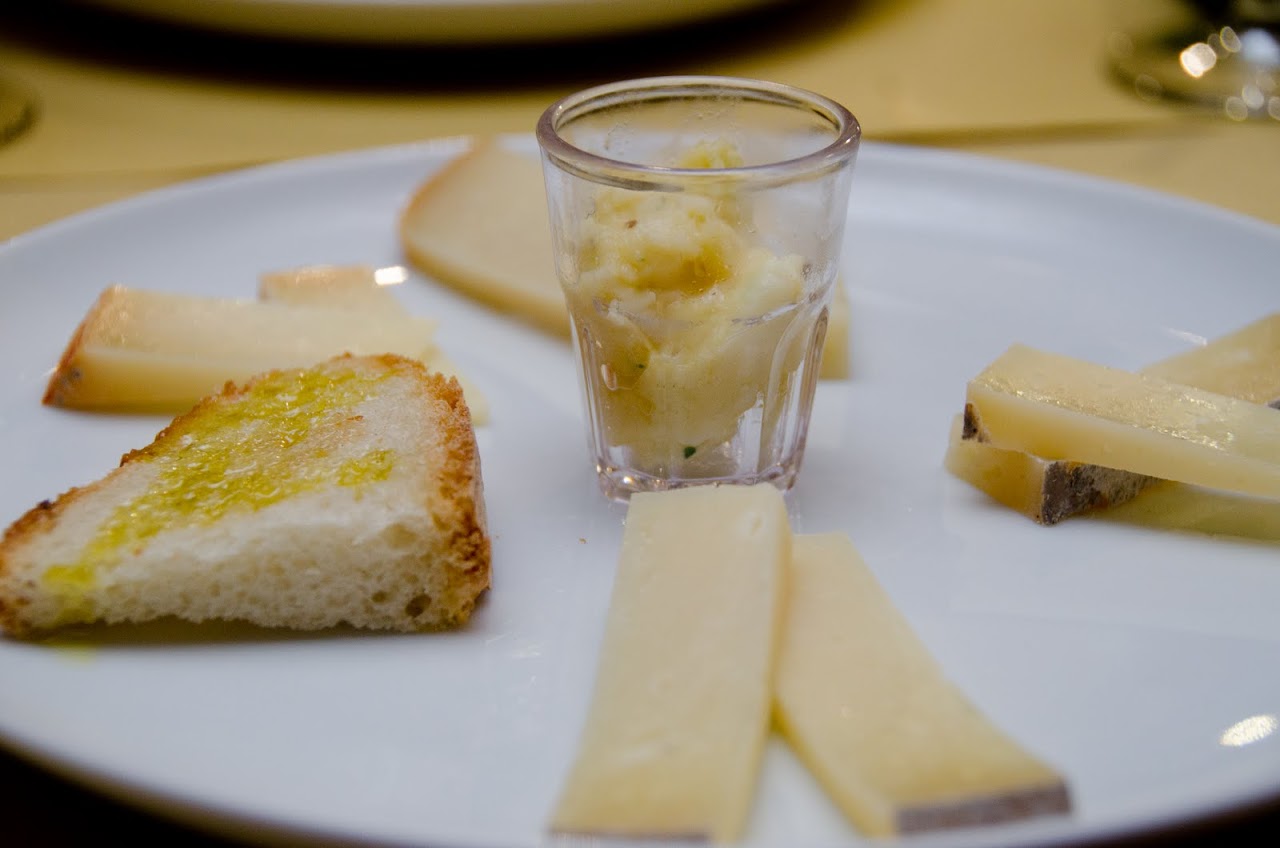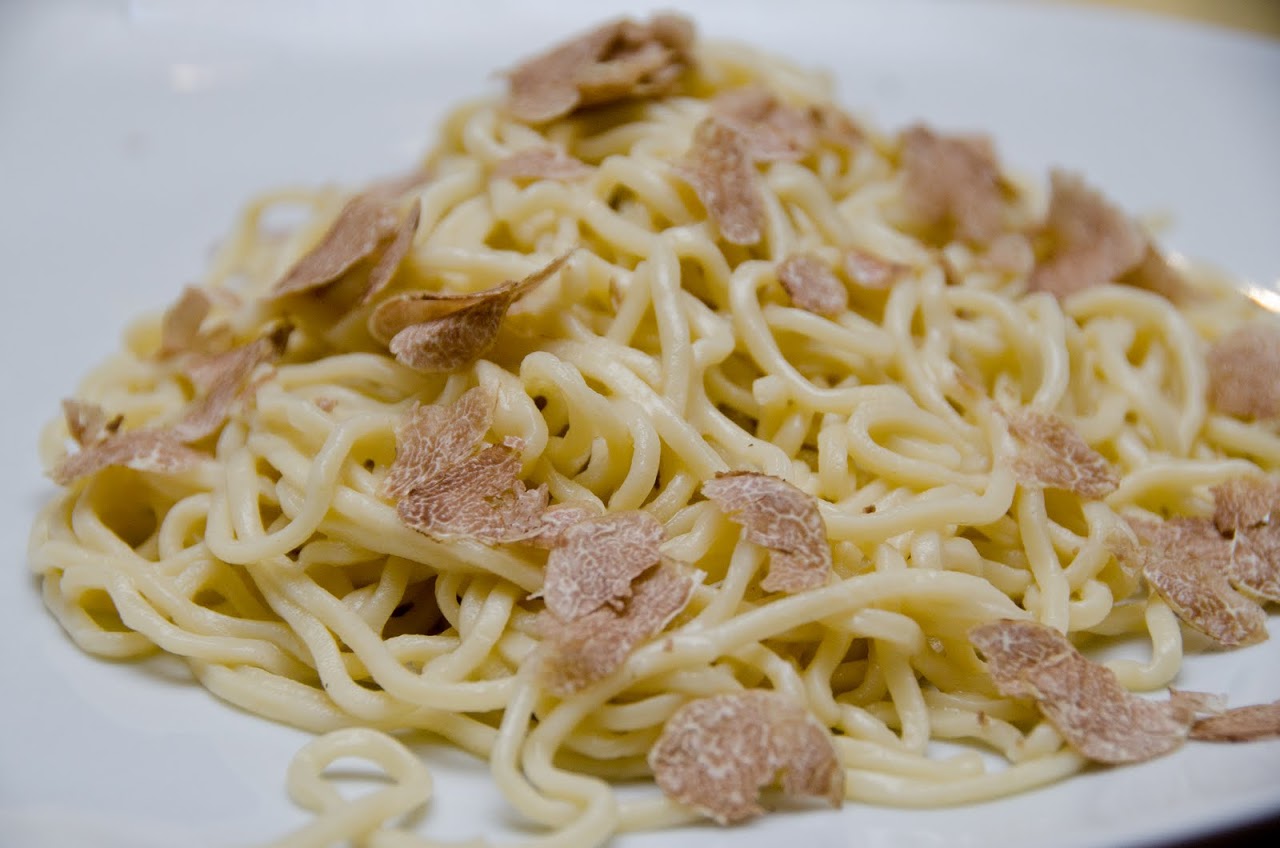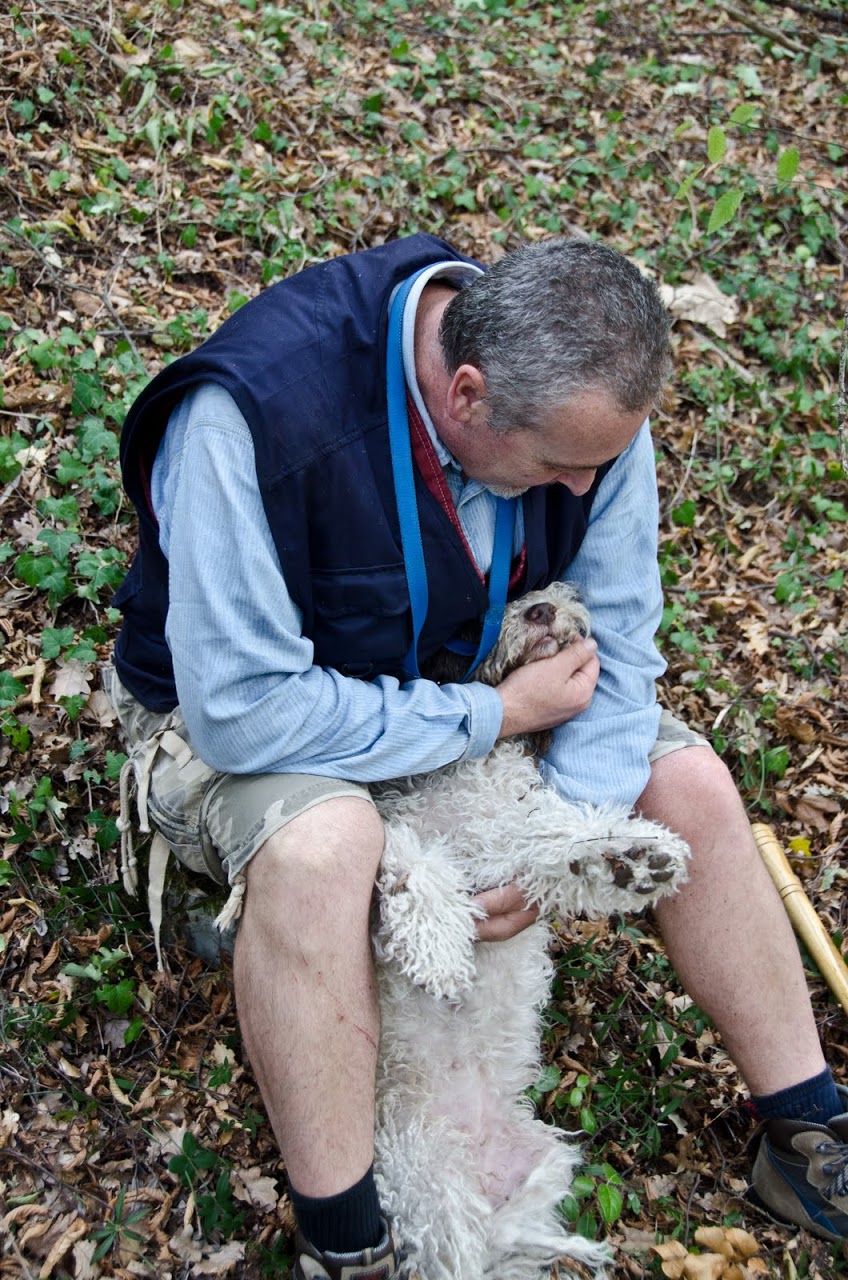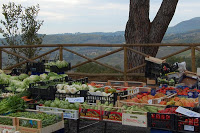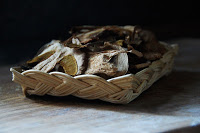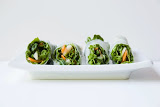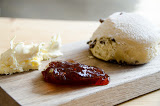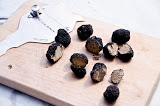
Black autumn truffles
We've all heard of truffles. They're touted as these super-expensive, ultra-fancy, only-rich-people-or-crazy-foodies-eat mushrooms. I've heard folks suggest that those who eat truffles are also the ones buying $1000 caviar topped pizza or a $25,000 ice cream sundae .
Well, hold up on the truffle judgments. Because, after spending a month hunting, shopping for, and cooking with truffles in Tuscany, I firmly believe that truffles shouldn't be reserved for the super rich (especially because they don't have to be all that expensive) or the ultra foodies (because doesn't everyone like good food?). Truffles should be something enjoyed by everyone because they transform the simplest food into something spectacular, all without breaking the bank.
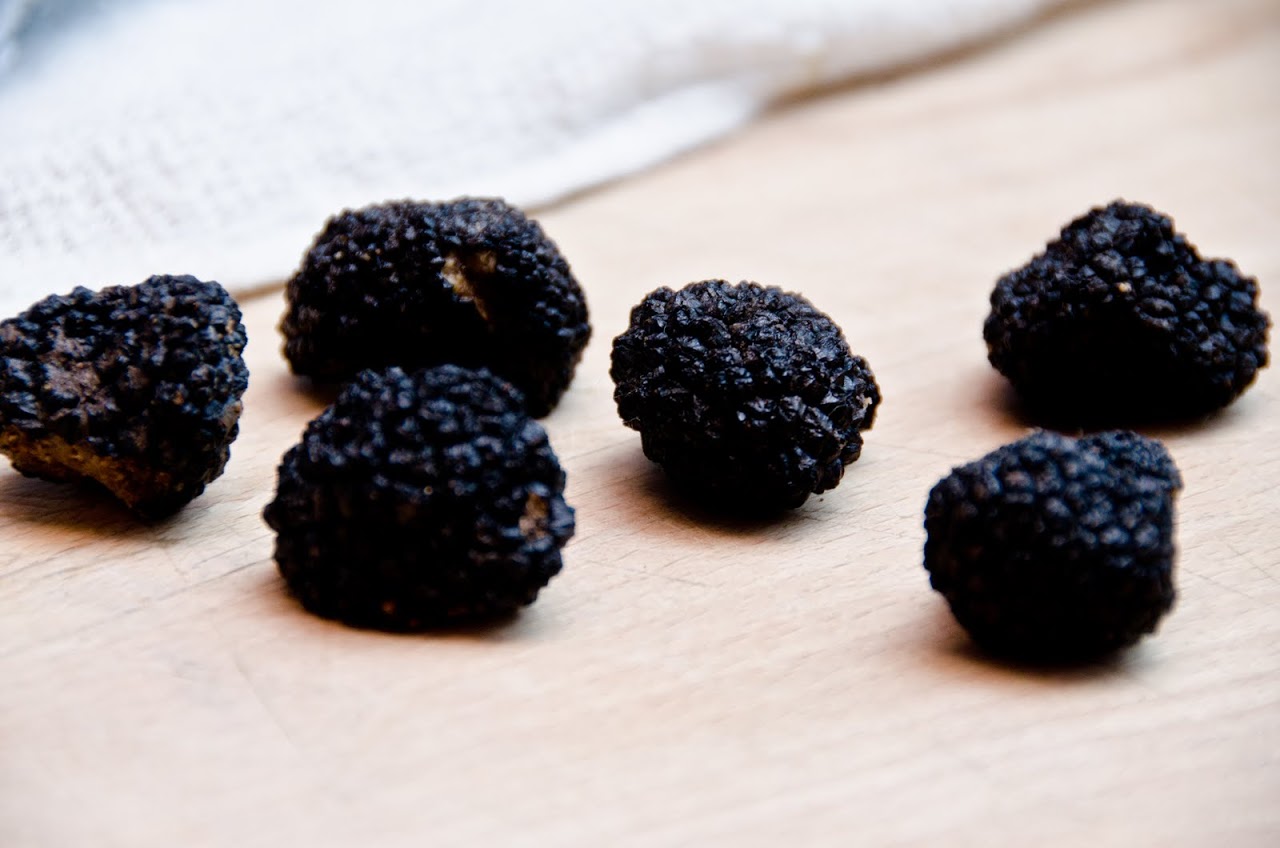
|
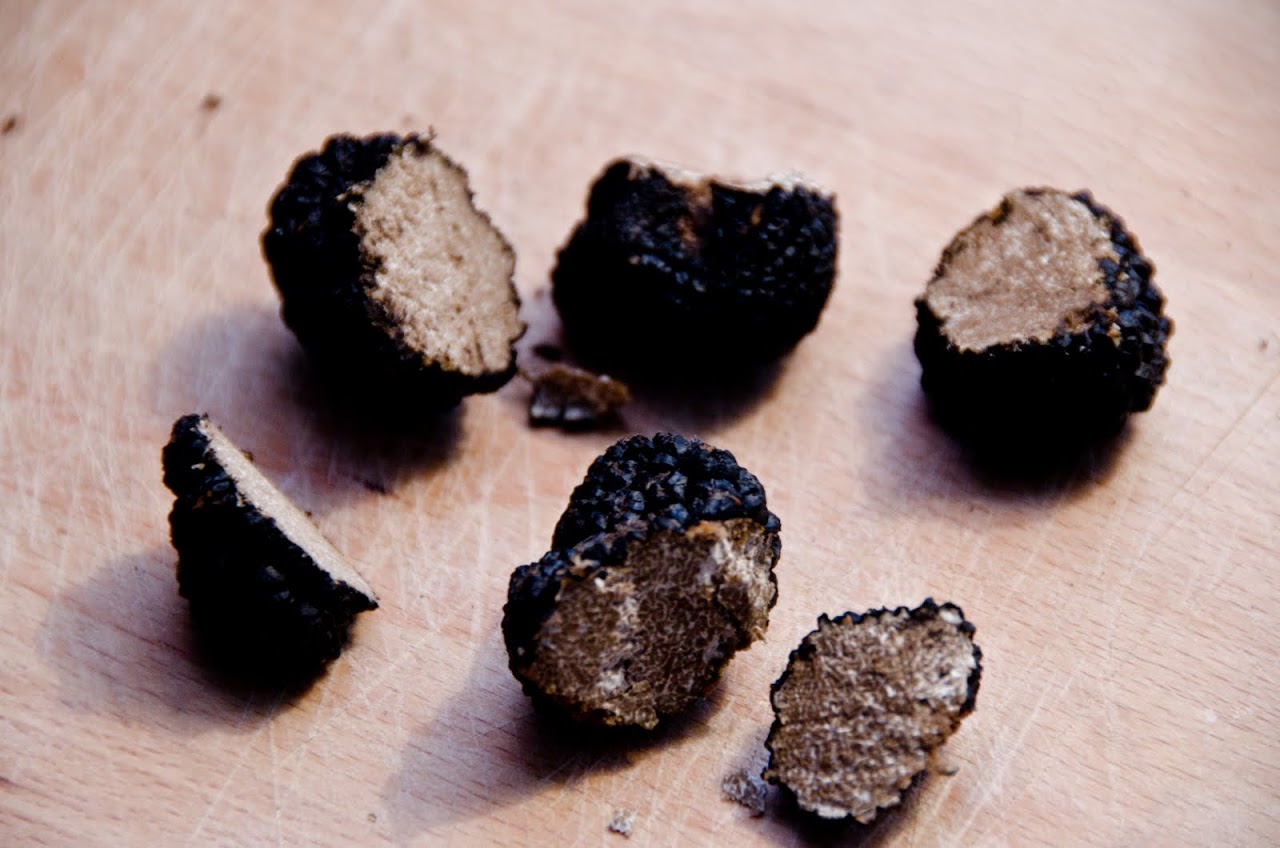
|

|
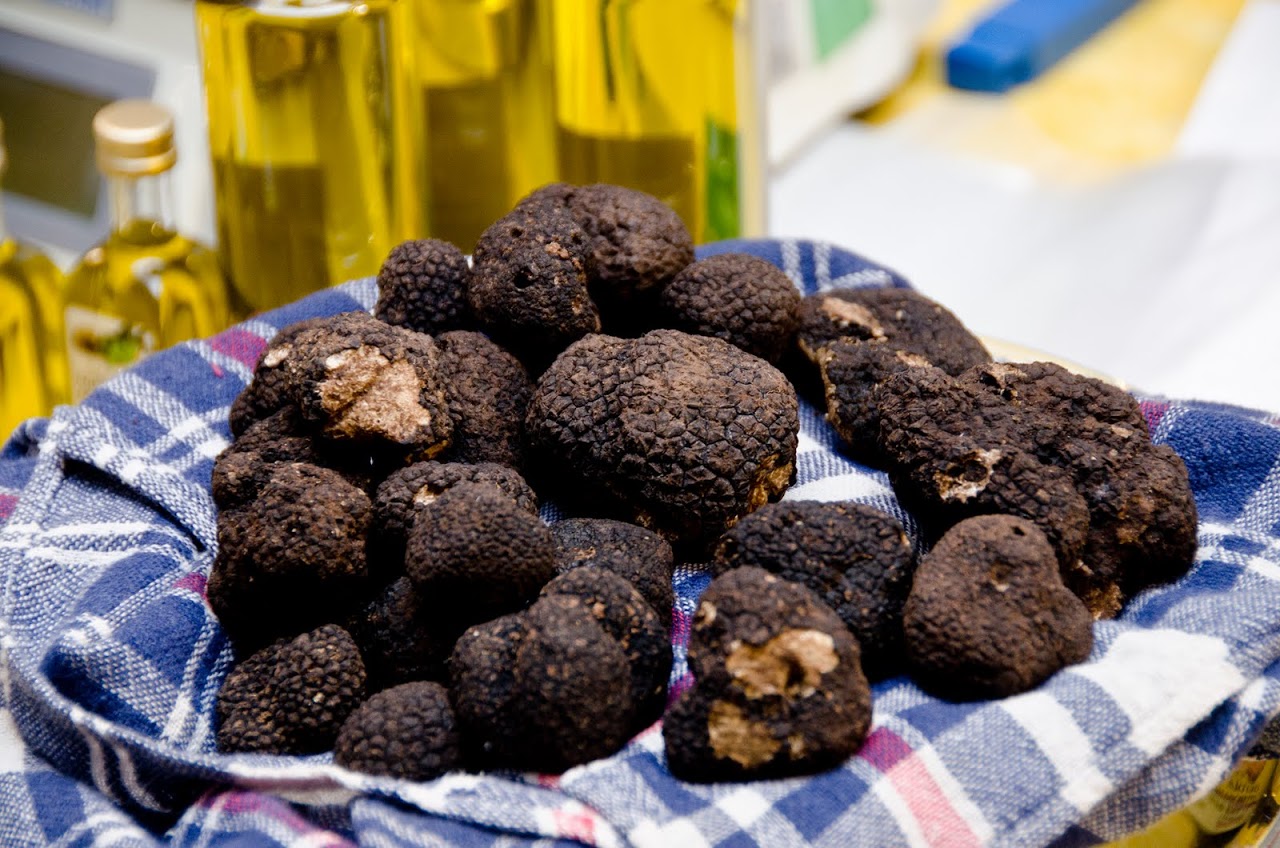
|
Black and white truffles
What is a truffle?
A truffle is a mushroom that grows under the soil. Most mushrooms --- criminis, shitakes, button, and portobellos, for example --- grow above the soil in moist climates. Truffles, on the other hand, grow several inches under the soil, meaning that you could walk over a hundred truffles without ever knowing that they were there. In addition, it is not easy to cultivate truffles as we cultivate other mushrooms and vegetables because truffles need a forest environment and do not grow with systematic consistency as other mushrooms do.
Truffles grow primarily in the regions around Italy including France, Slovenia, and Croatia, though there are also varieties that grow in China and the northwestern parts of the United States. In Italy, there are nine varieties of truffle and five of those varieties are grown in Tuscany. The famed white truffle --- the key item in the world renowned Alba White Truffle Festival --- is grown only in Italy.
It's difficult to explain the flavor of the truffle. It's kind of like an intense mushroom but without the pungency that most mushrooms have, a little bit sweeter, and stronger but more delicate all at the same time. I know that sounds like nonsense so, let me try again: a truffle is about as close to culinary heaven as I can get without delving into waistline-building desserts.
Prices for white truffles and 400 Euro white truffle
Why are truffles so expensive?
Let's talk about what expensive means. Truffles range in sizes from teeny ones no bigger than a fingernail to potato sized giants. Prices are set by the truffle association in Italy, though prices can be upcharged if sent outside of the European Union (meaning that you're going to spend way more on a truffle in the United States than in Europe.) Those little ones that you see at the top picture above sell for 10 Euros for four truffles, 18 Euros for nine truffles and so on. On the other hand, the massive potato-sized truffle pictured above sold for around 400 Euros at a market in Cannes, France. We were standing next to the man who purchased this truffle and when the shop attendant brought it out, every other scent at the market was eclipsed by the scent of this amazing truffle.
So, all this means that, yes, you can spend a ton of money on truffles but you can also spend a very moderate 10 Euros and get enough truffles to make two dinners. Patrick has easily spent $14 USD on a single really high quality New York strip steak and we spent about the same for two meals worth of white or black truffles in Tuscany.
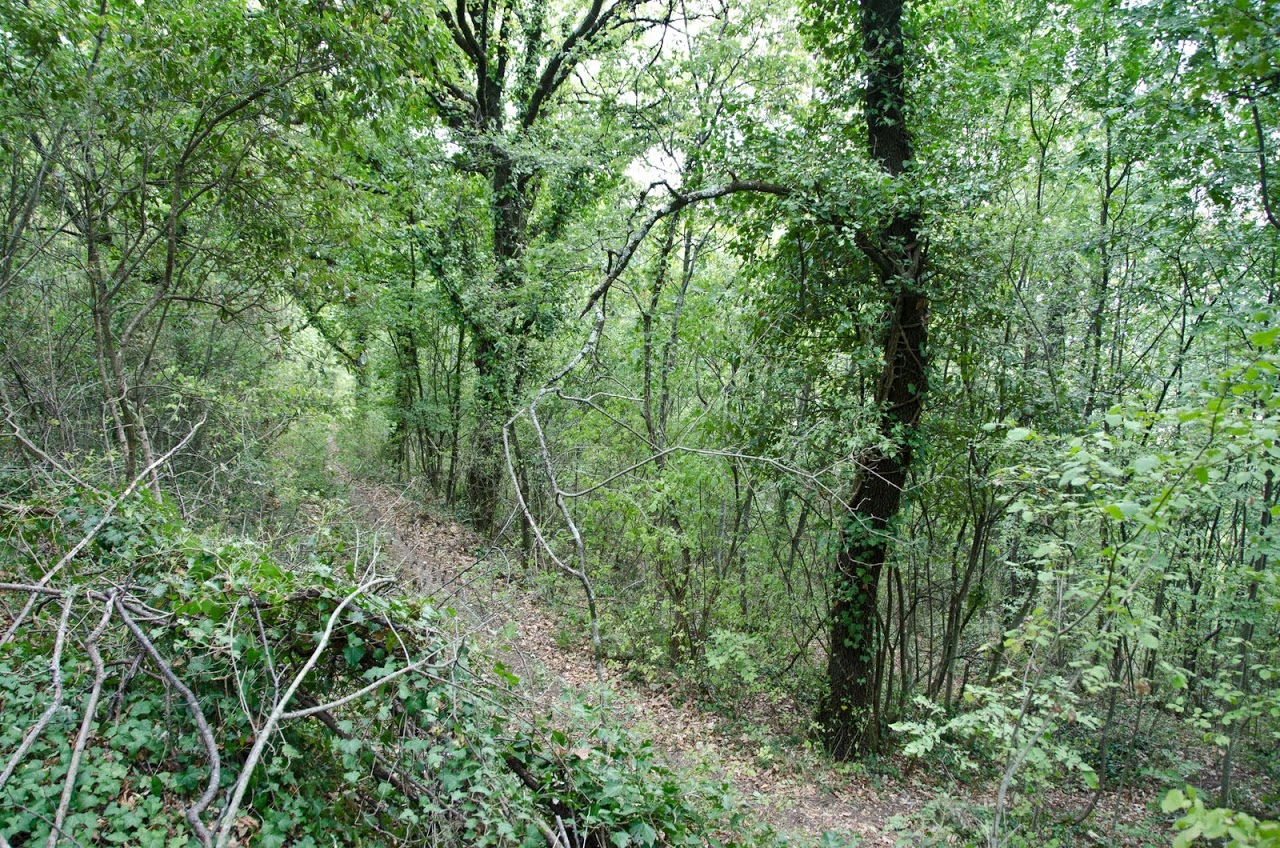
|

|
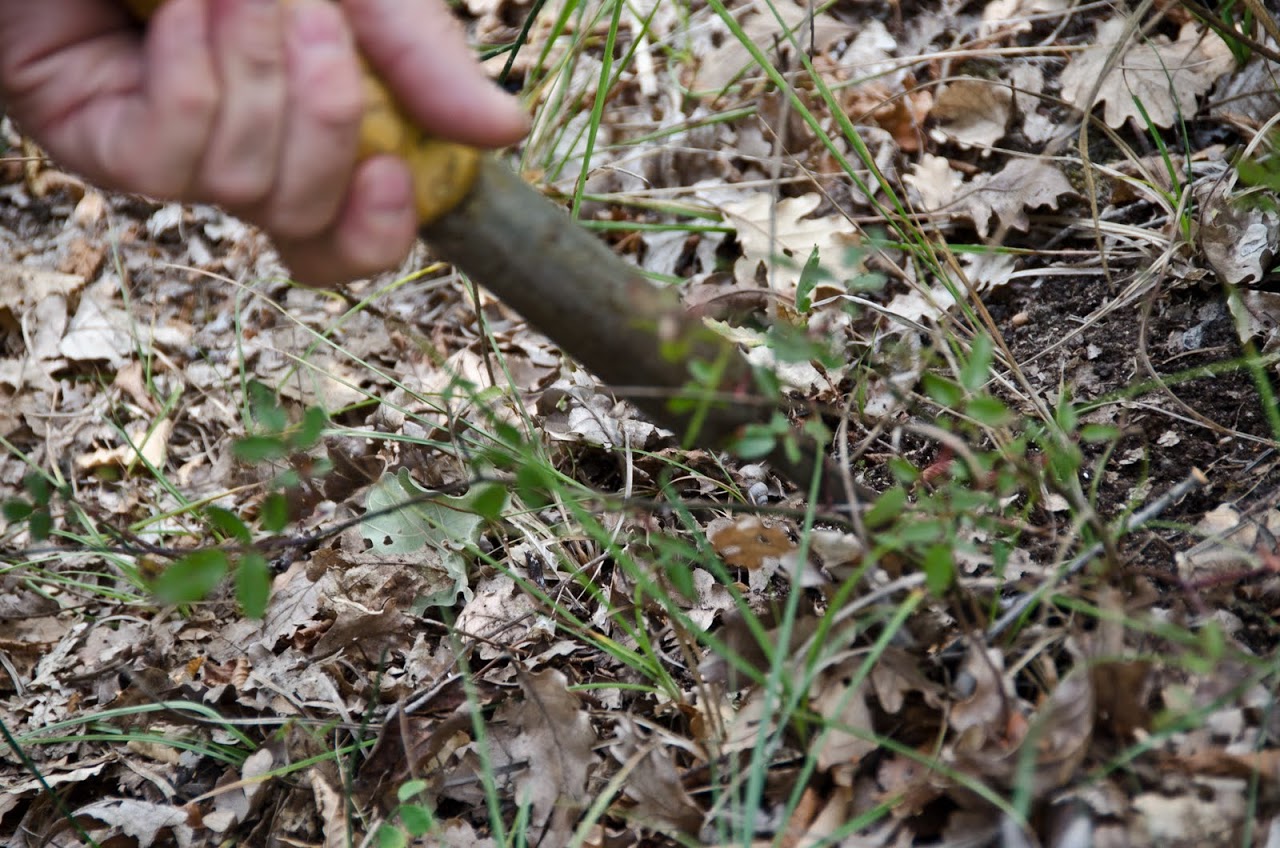
|
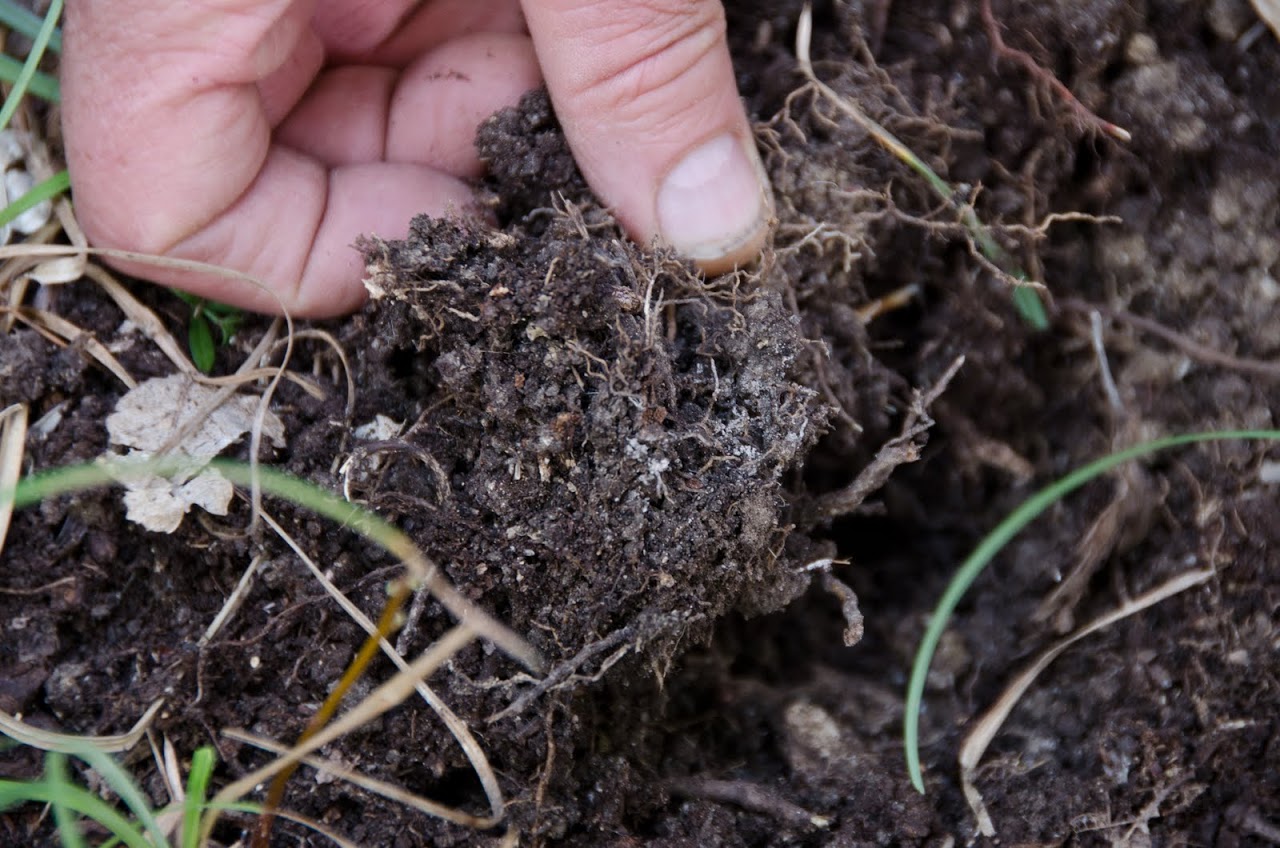
|
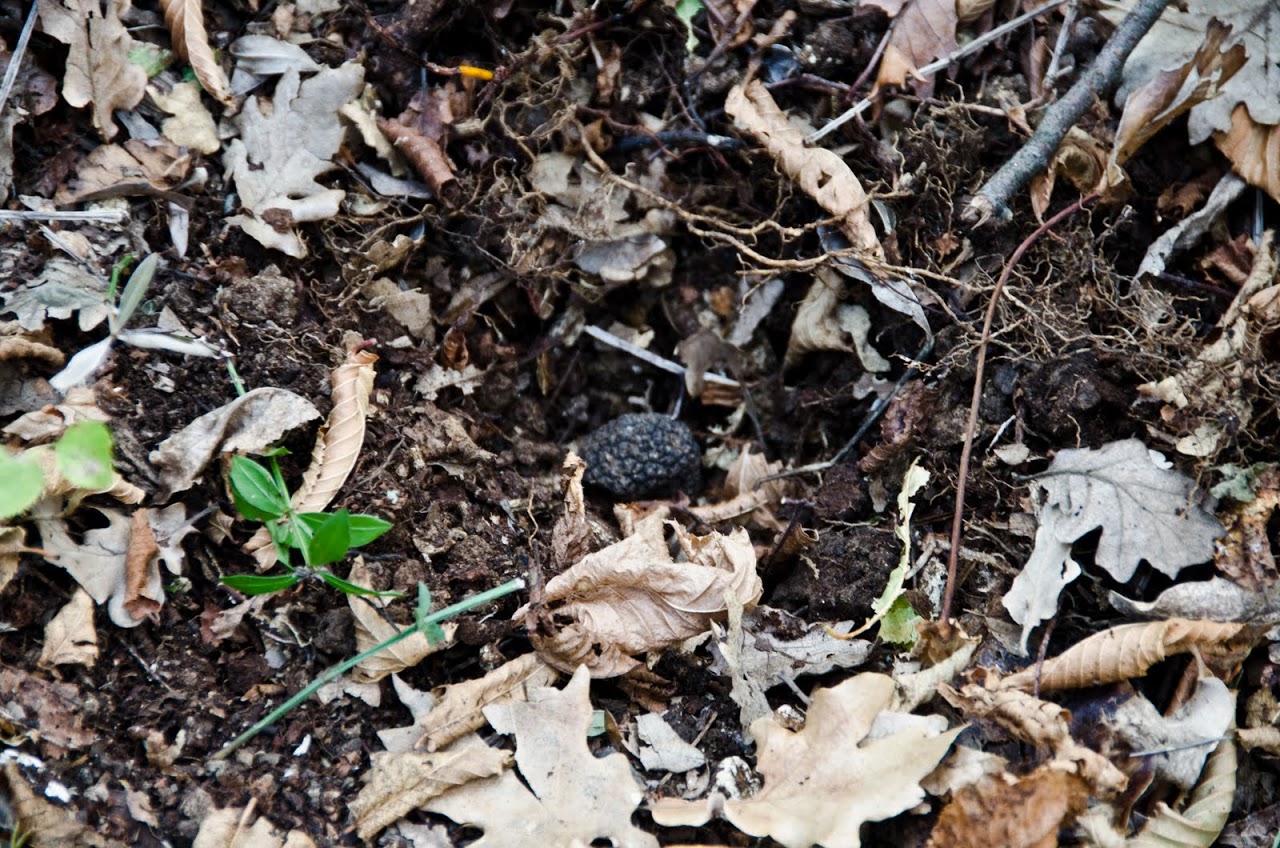
|

|
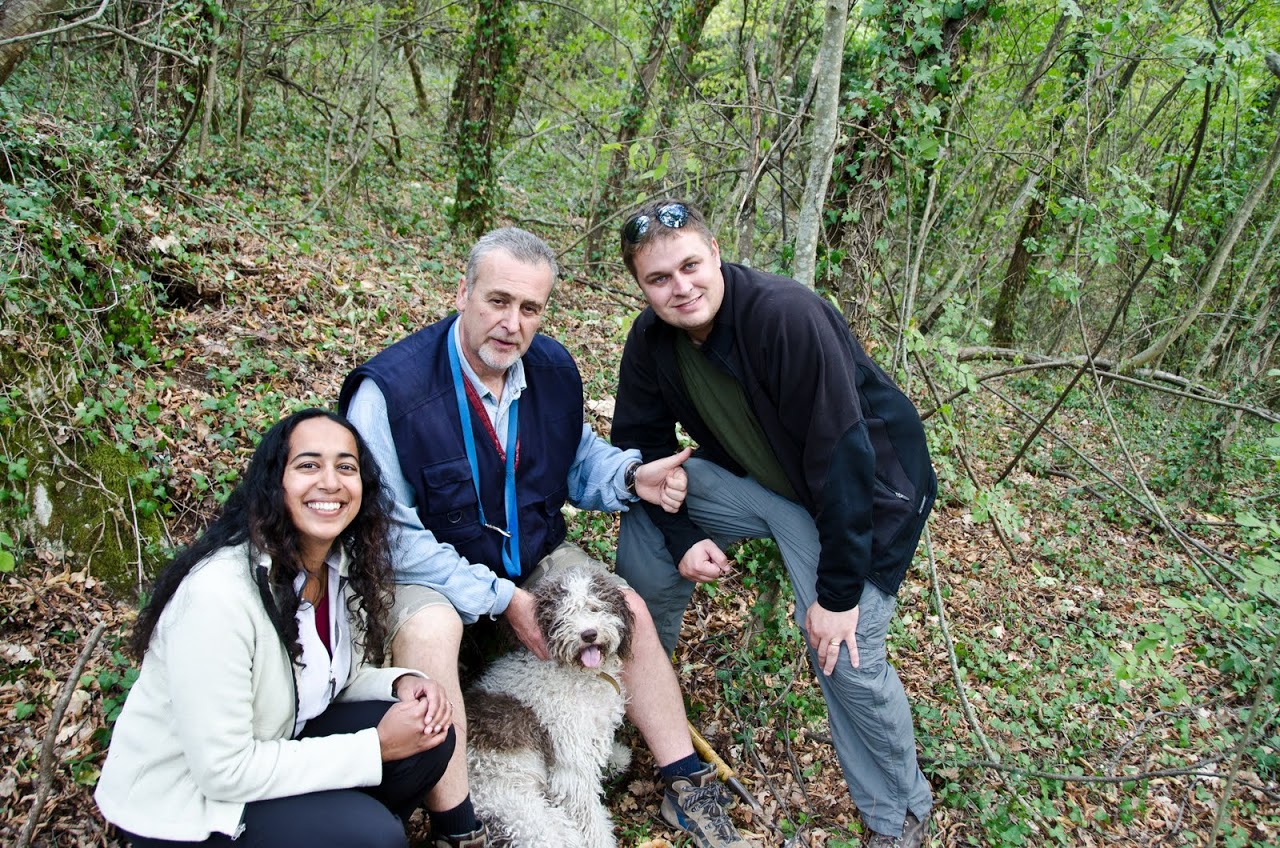
Edda and the process of finding a truffle; us with Edda and Giulio
All about truffle hunting
Giulio is a third-generation truffle hunter. Born in the Piedmont region, the "best place for food in the world," he says, Giulio never planned to do anything other than truffle hunting. He spent several years studying to be a truffle hunter and then passed an exam to do so; all Italian truffle hunters must be certified to enter the forest and search.
Giulio has the Italian passion for life and food, punctuating his words by waving his hands and leaning on his heels as he speaks to us of the economics of truffles. "We're always looking to find different ways to make money," he says, explaining why he offers truffle hunting tours. There are two other truffle hunters who offer tours in the Tuscany region while the rest of the truffle hunters --- approximately 2,000 or so in Italy --- focus on gathering truffles and selling them at markets and directly to dealers. Giulio spends one day each week on a tour and the other six with his dog Edda, roaming the forest in search of the delicacy.
Edda is simply a beautiful dog, born and bred for this particular pursuit. Giulio whistles for her every morning and they head to the 500 hectacre forest near his home. He lets Edda off her lead and she sticks her nose to the ground. Every ten minutes or so, she hauls off, running as fast as any other dog would run to chase a rabbit or squirrel. But, she's chasing a scent. She's chasing the scent of a truffle she's found from up to 10 yards away.
At first, we didn't believe it: Edda suddenly sniffs, hales off, and Giulio runs quickly behind her to find the spot where she's pointing. The spot looks like any other spot in the forest to us, but if Giulio doesn't catch up to Edda in time, she will dig into the dirt and eat the truffle herself. He arrives and gives her a portion of her breakfast and, while she munches happily, he digs a shallow hole with a special trufflehunter's trowel. Within a few seconds, he has revealed what looks to us like a clod of dark dirt. He praises Edda and, if it is a particularly small truffle, will give it to her to eat.
"I have to encourage her," he explains, "so she will want to find more truffles." Edda trained for six months in a special truffle hunting school and then for a year on the field. She will be able to hunt until she is around seven years old or so, because after that time, it may become difficult for her to move around and she will be retired from the field. Every day, Giulio feeds her about five grams of truffle while she is hunting and in her dinner. That's the best fed dog in the world, I think!
Edda and Giulio search every single day for truffles because they are mapping the entire forest, ensuring that they come back next year to the same spot to see if another truffle has regrown there. Truffles regrow three to five times in different seasons and, on the day we searched with Edda and Giulio, Giulio noted that Edda remembered a few of the spots where they had looked last year. Giulio's biggest competitor and threat is not other truffle hunters but rather the wild boar, which has a better nose for truffles than the dogs and will rip apart an area of a forest in search for the delicacy. (Indeed, these animals proliferate in Tuscany and are one of the most common regional specialties. In autumn, pappardelle al cinghiale (literally, pappardelle with wild boar) is on every trattoria menu.)
0;
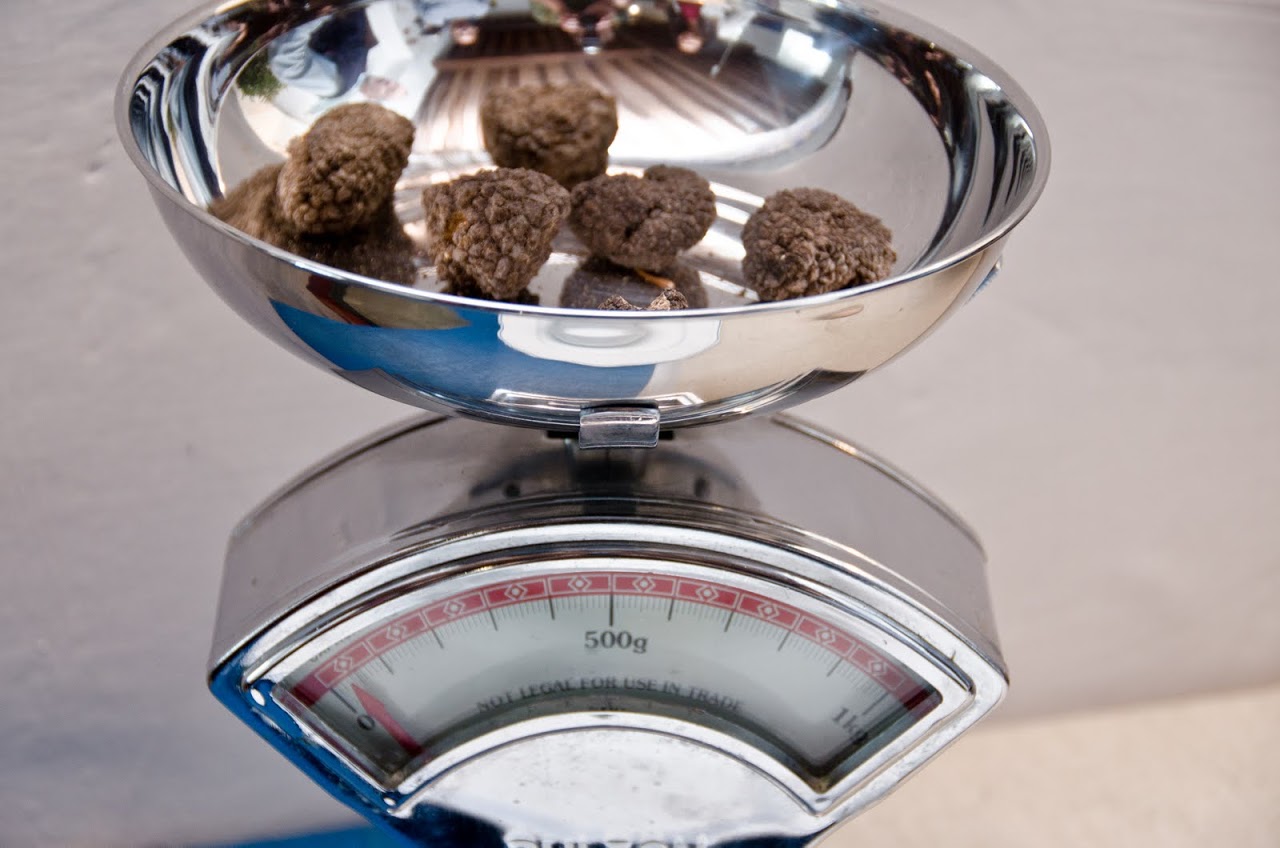
|
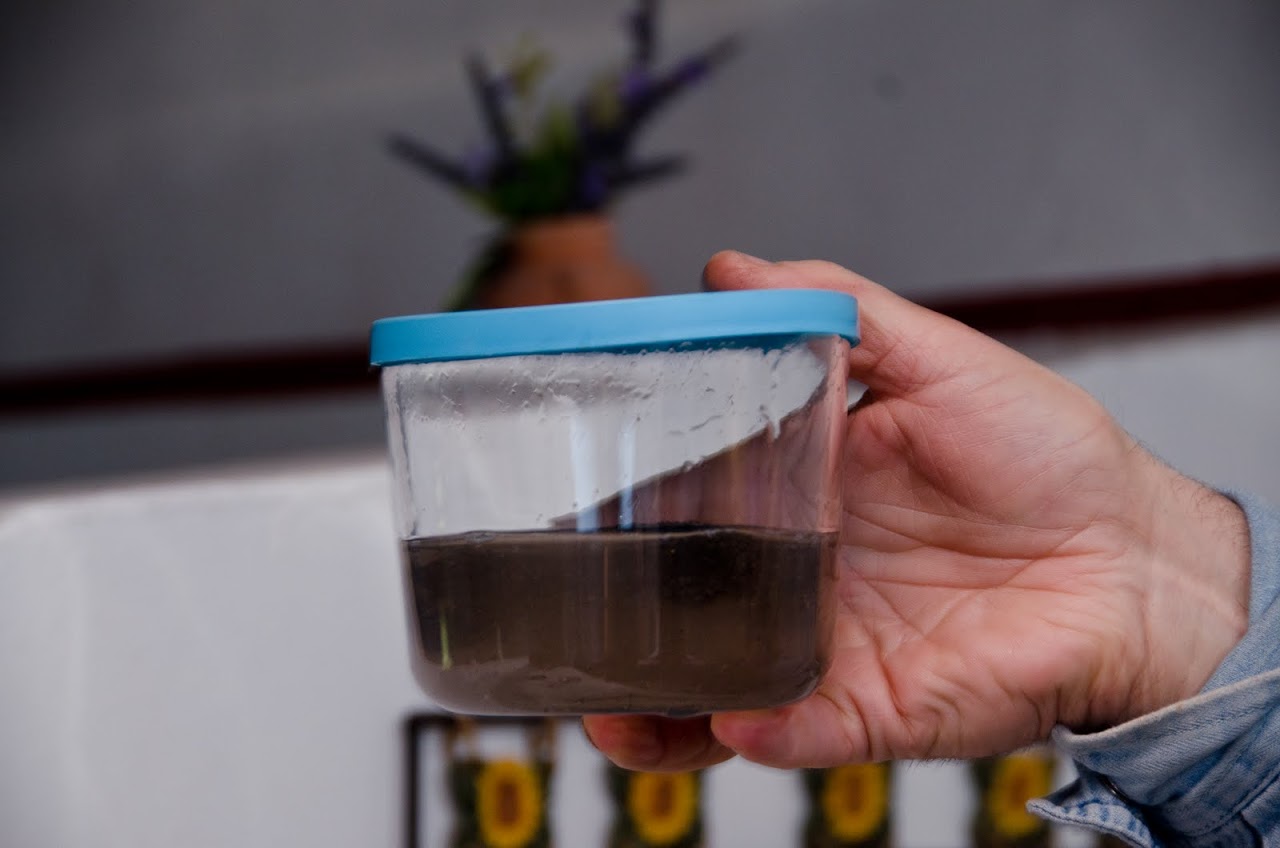
|
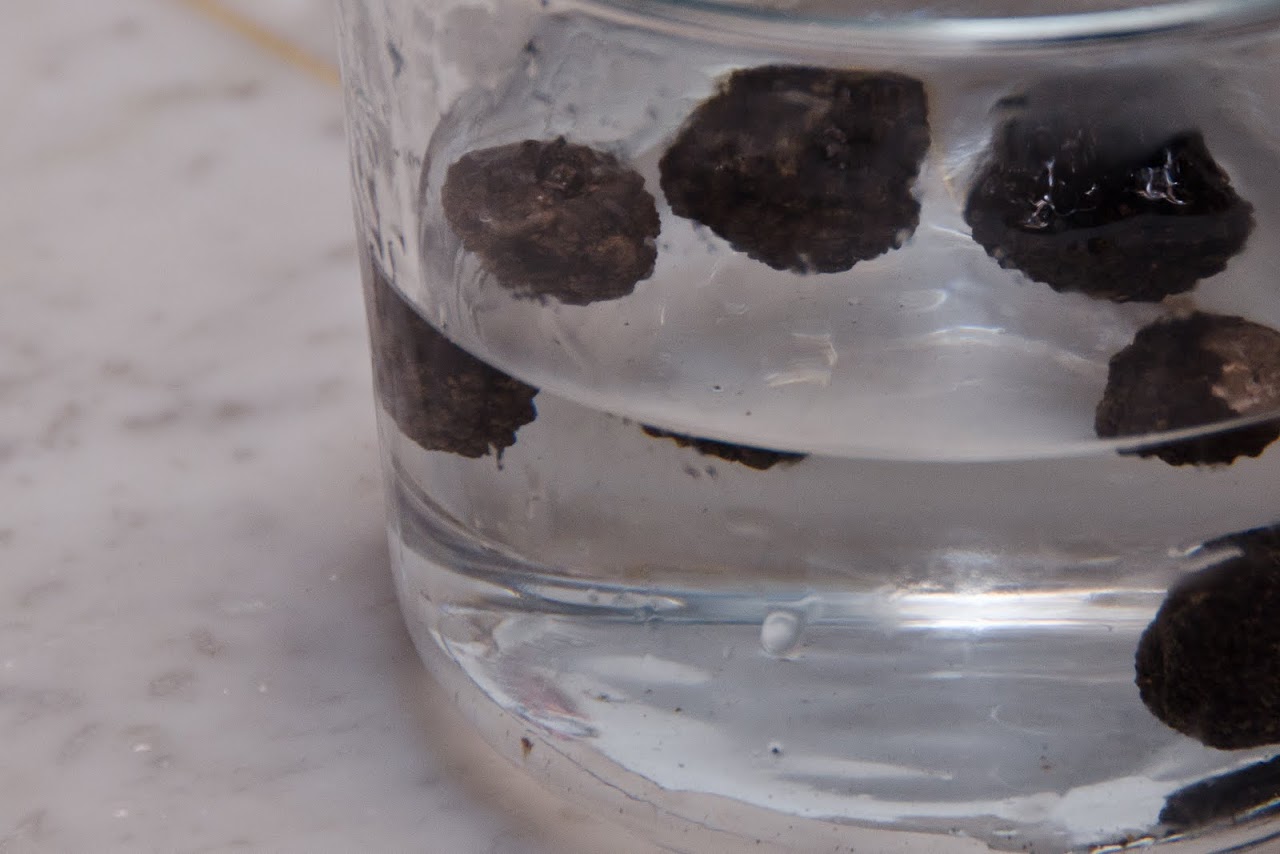
|

|
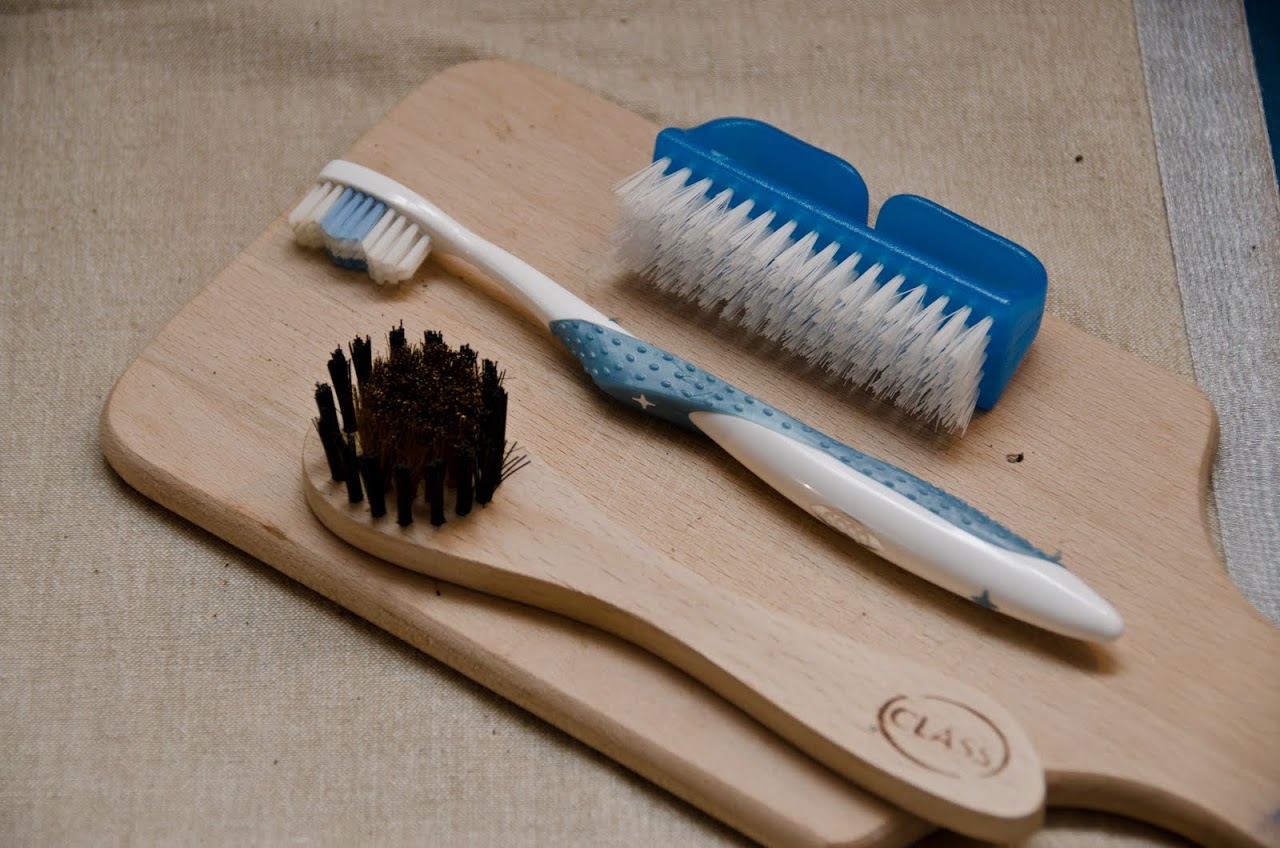
|
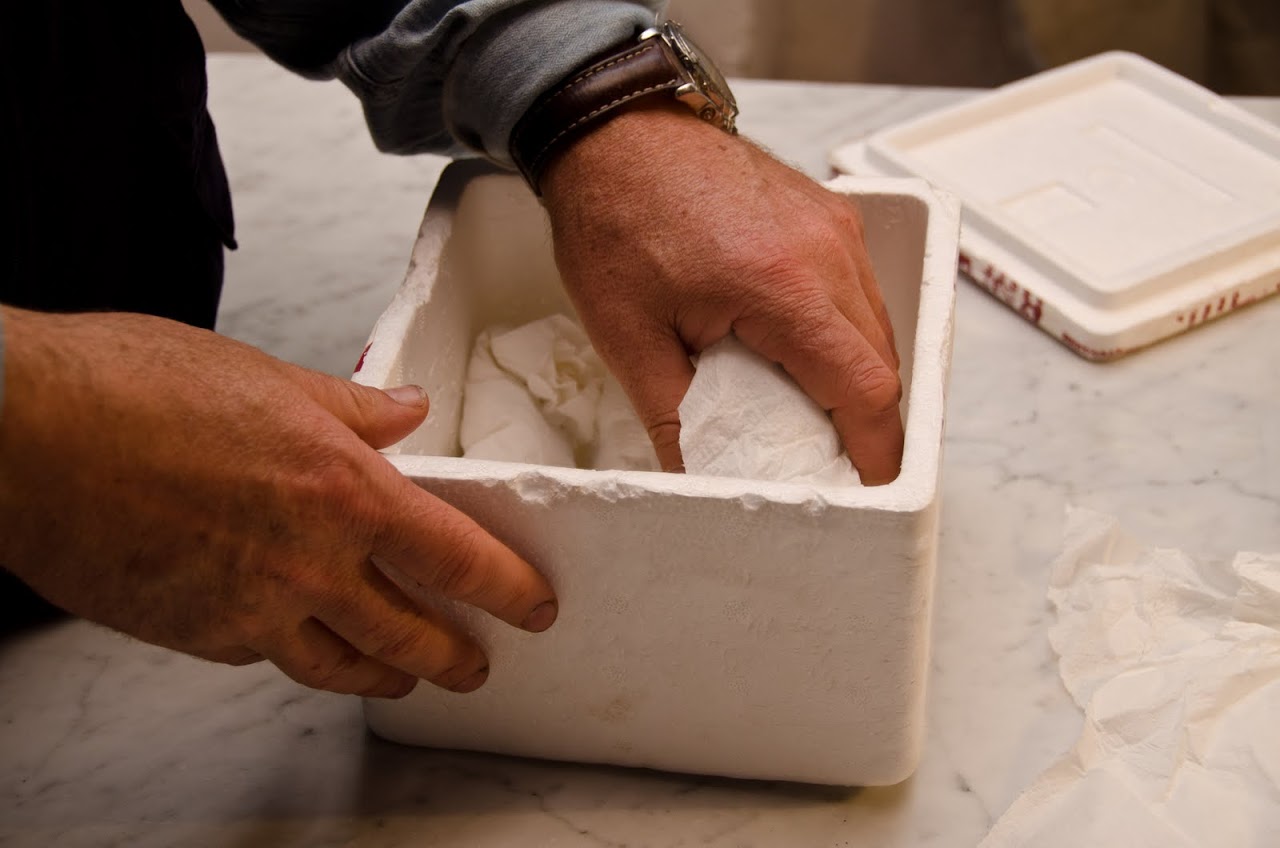
|
Cleaning and storing truffles
"Never buy a truffle that looks clean," Giulio warned us. The dirt protects the truffle's moistness because a truffle can lose up to 30% of its water weight within a few days. In fact, a fresh truffle must be used within four to five days ---- I had always heard the story that a fresh truffle can be stored in rice indefinitely but Giulio rejected that claim immediately. In our taste tests, we agreed: a truffle purchased and used within two days had the best flavor and by the end of a week, the truffle lost much of the strong, lovely scent that makes it so special.
As soon as you purchase a fresh truffle, pack it between layers of moist paper towels and place it into the refrigerator. Alternately, you can place it in a ziploc bag with rice and place the ziploc bag into the refrigerator. (We prefer the rice method because the rice also retains a wonderful truffle scent.) Again, remember that the truffle should be used within four to five days of being placed into the refrigerator. (When Giulio ships truffles to the United States, he ships it overnight in a refrigerated box so that the customer can take it out and eat it immediately.)
When you are ready to use the truffle, place the truffle into an airtight container with water and shake, shake, shake, until the water becomes dirty. Dump the water out and repeat the process until the water is completely clean. Let the truffle dry and once it is dry, use a small brush or toothbrush to remove any remaining dirt.
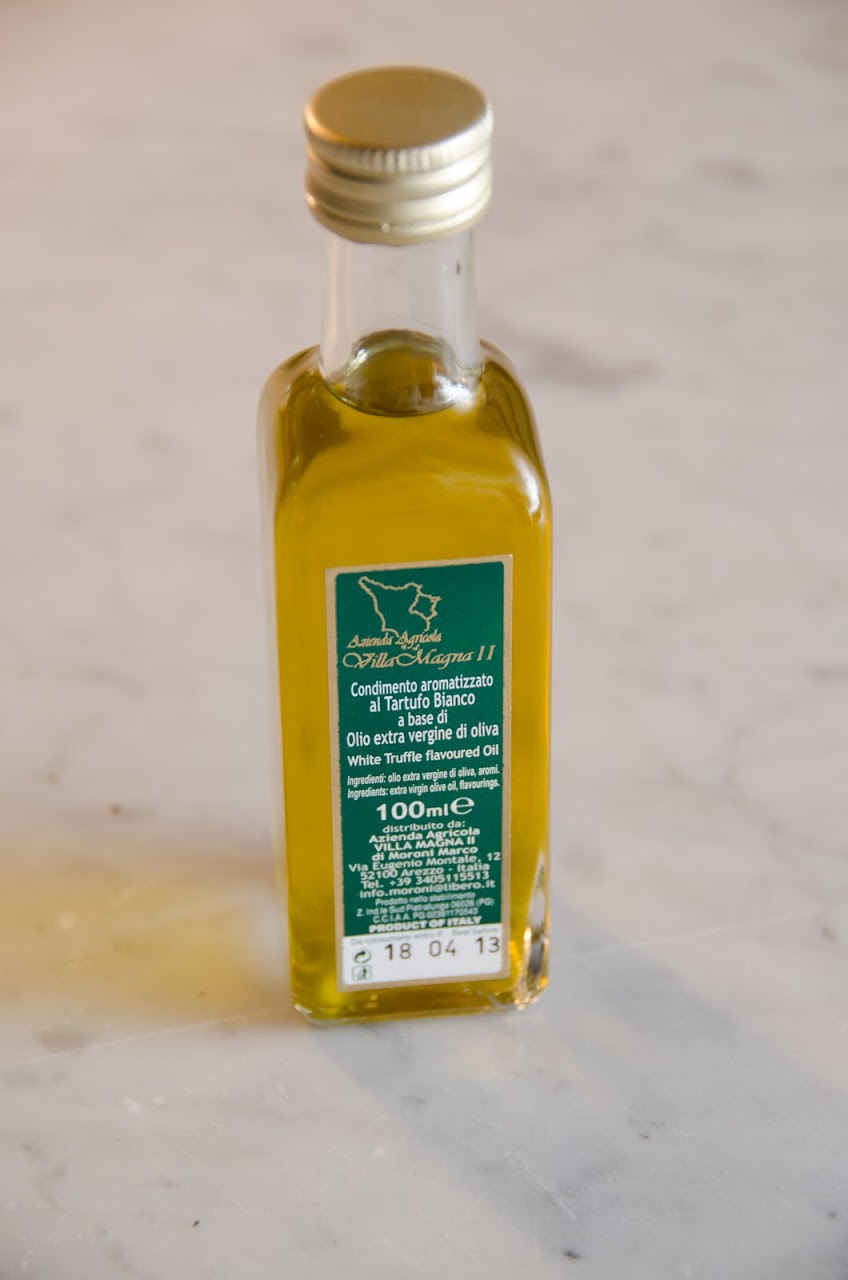
|
On truffle products
Because fresh truffles must be used so quickly, trufflehunters sell many other truffle-related products. The most common of these products is truffle oil, made by soaking the older truffles into fresh olive oil and letting the truffles infuse into the oil. Trufflehunters also produce truffle paste, made by blending chopped truffles with olive oil. These products will last and stay fresh for up to one year. We also saw pecorino cheese flecked with truffles in Italy and a luscious brie cheese with truffle paste in Provence, France, which we've decided is the best cheese we've ever tasted.
You can find these truffle products in almost every souvenir store in Italy, but we found the best quality at cheapest prices at truffle festivals in Tuscany (more on these festivals below).
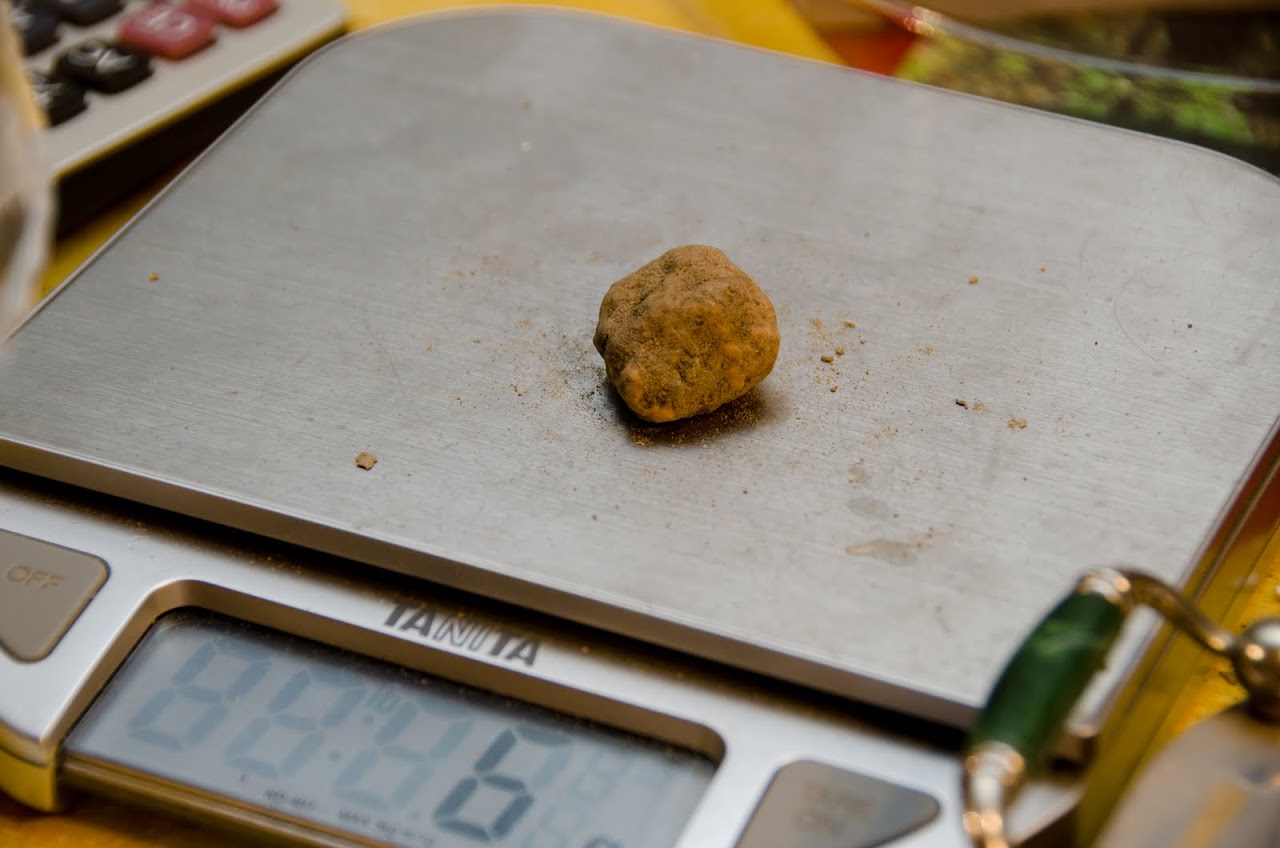
|
|
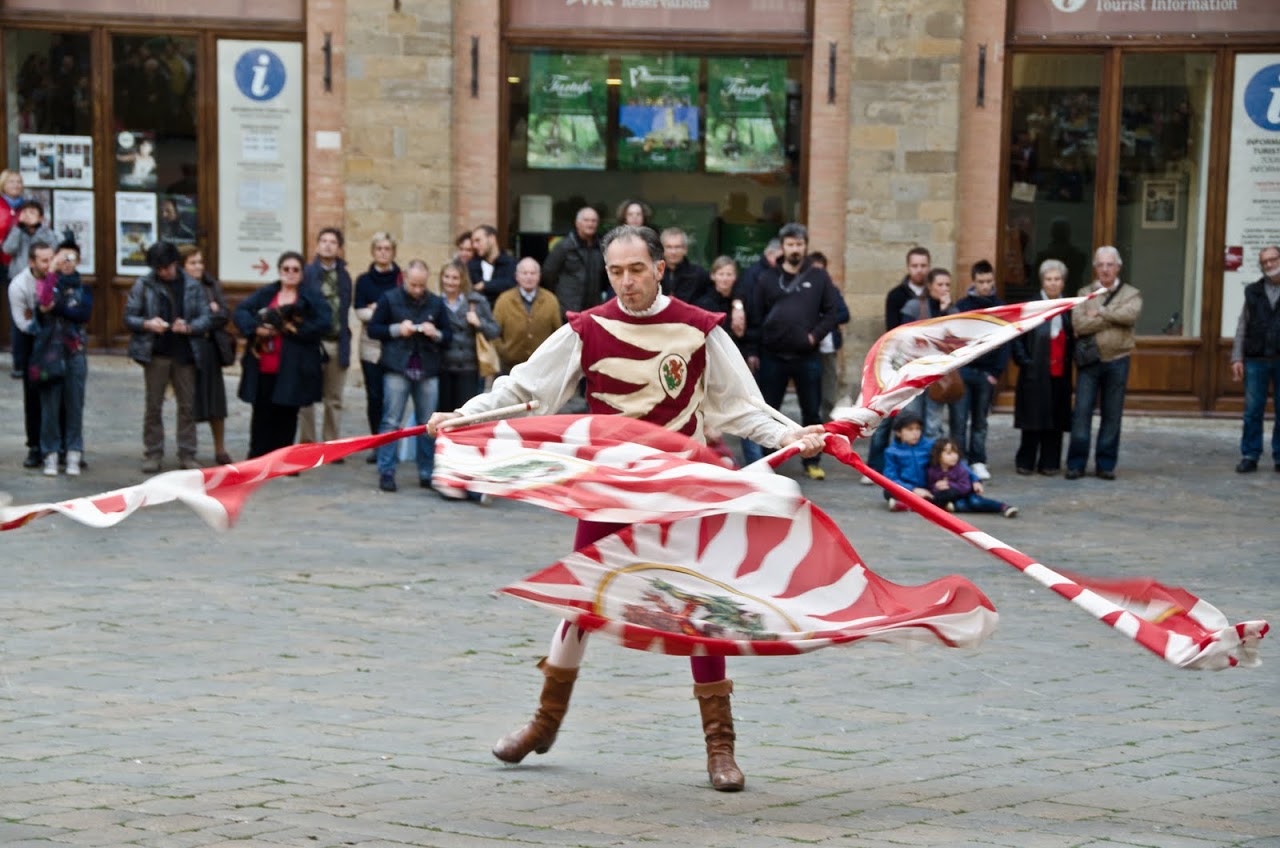
|
|
Sign for Volterra White Truffle Festival and a truffle being weighed; performer at the festival
On truffle festivals
The Alba Truffle Festival is a big deal and is known worldwide by foodies and non-foodies alike. It's been featured on FoodTV, magazines, and more, especially because of the frequent record-breaking truffle sales made at that festival. However, if you can't make it to Alba, let me assure you that truffle festivals abound all over Tuscany (and I would assume the Piedmont and Umbria regions, as well.)
We stopped in at the Volterra Tartufo Bianco (White Truffle) festival held in the last two weekends of October. The city set up different stations where people could buy truffles and truffle products directly from trufflehunters. We purchased fresh truffles, truffle paste, and truffle oil for about a quarter of the price as we would have paid in Rome for those same products. If you are in Italy in mid to late October, I highly recommend stopping in at a tourist office to find out if there's a truffle festival in your area.
Even if you're not a truffle lover, the festivals are worth visiting because we found great food being served (some focused specifically on white truffles), booths for fresh olive oil and wine, and performers lending a festival atmosphere to the whole city.
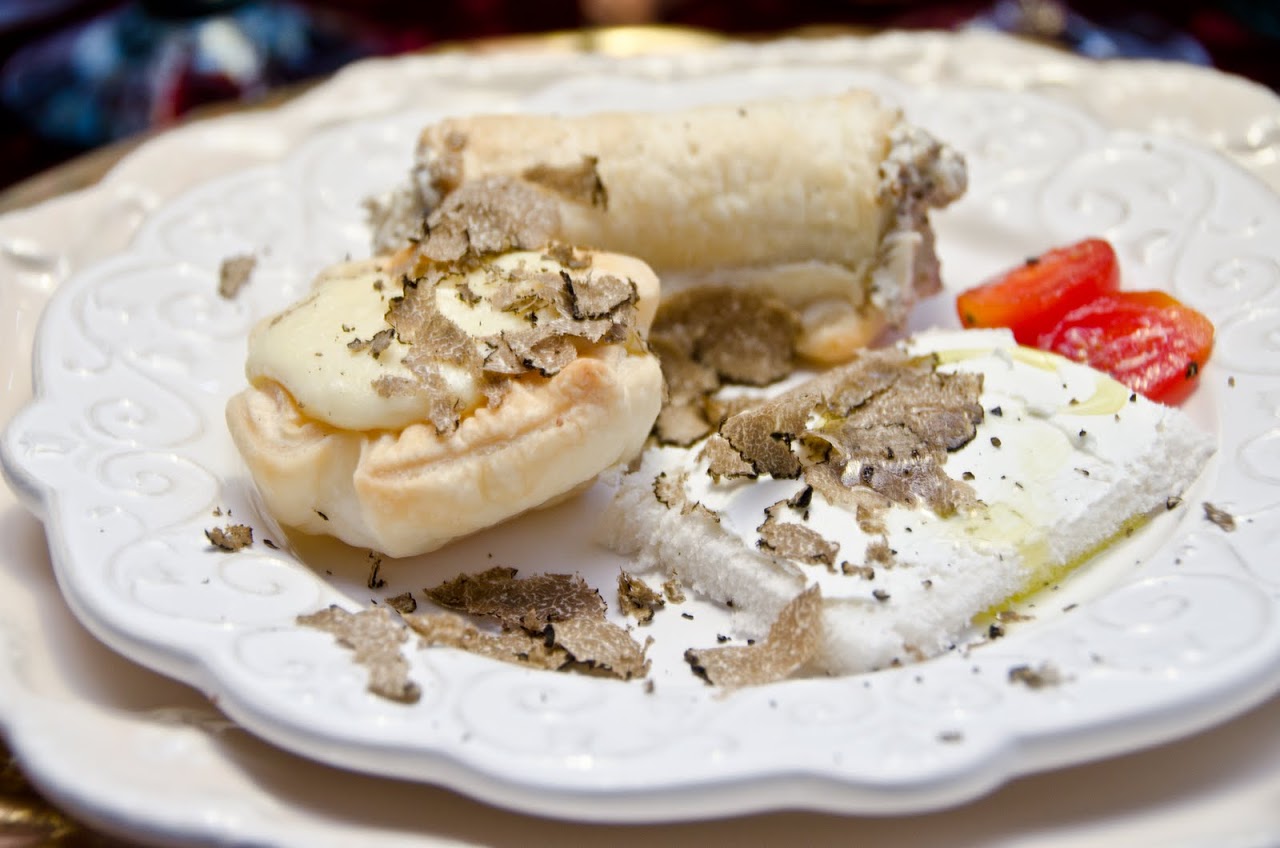
|
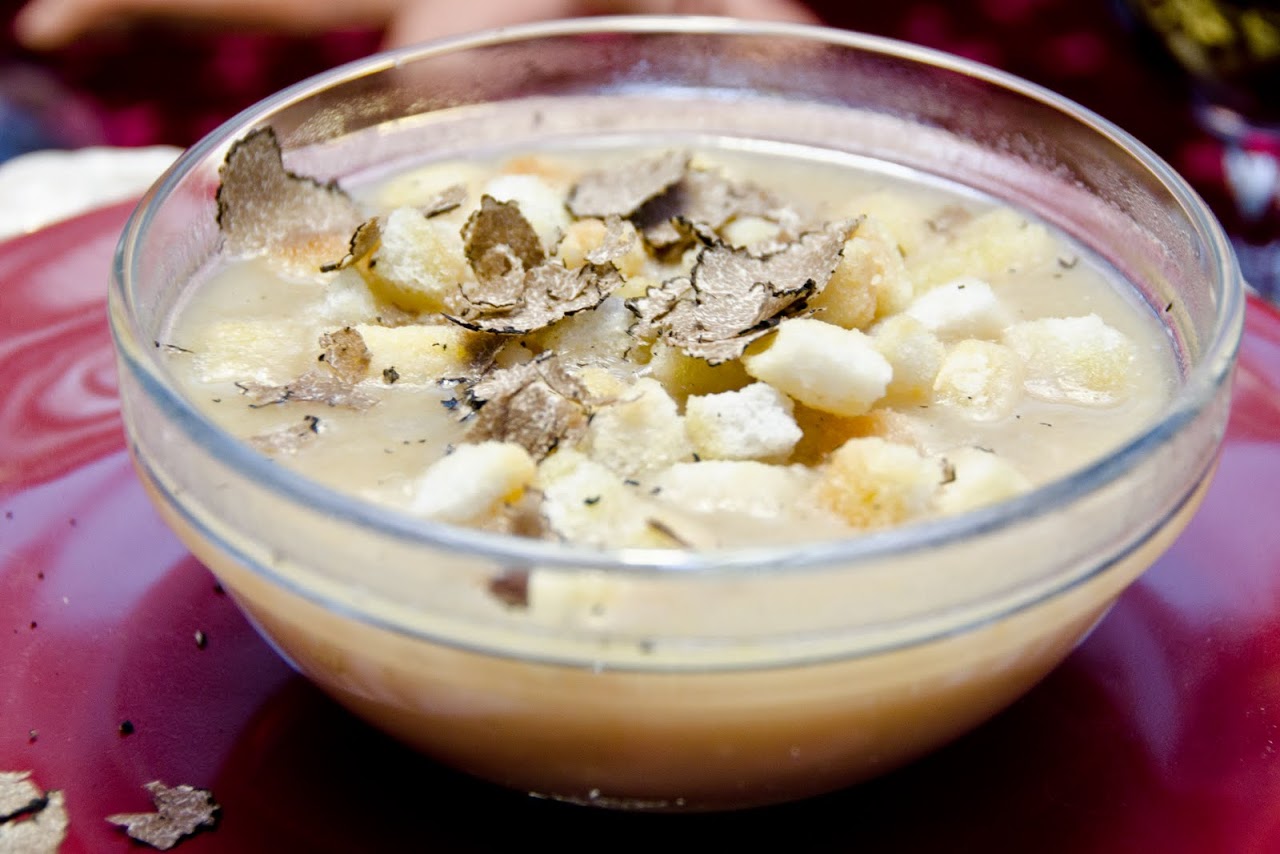
|

|
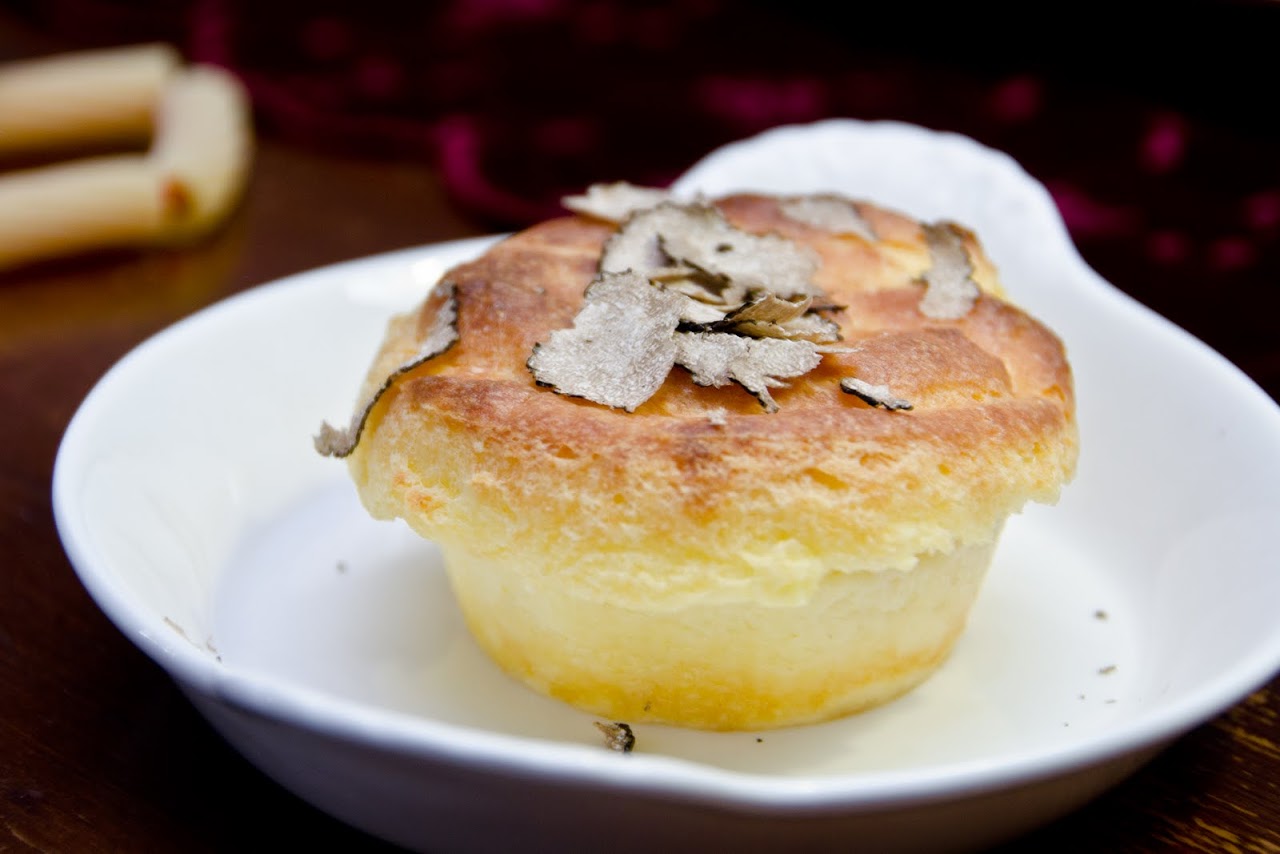
|

|
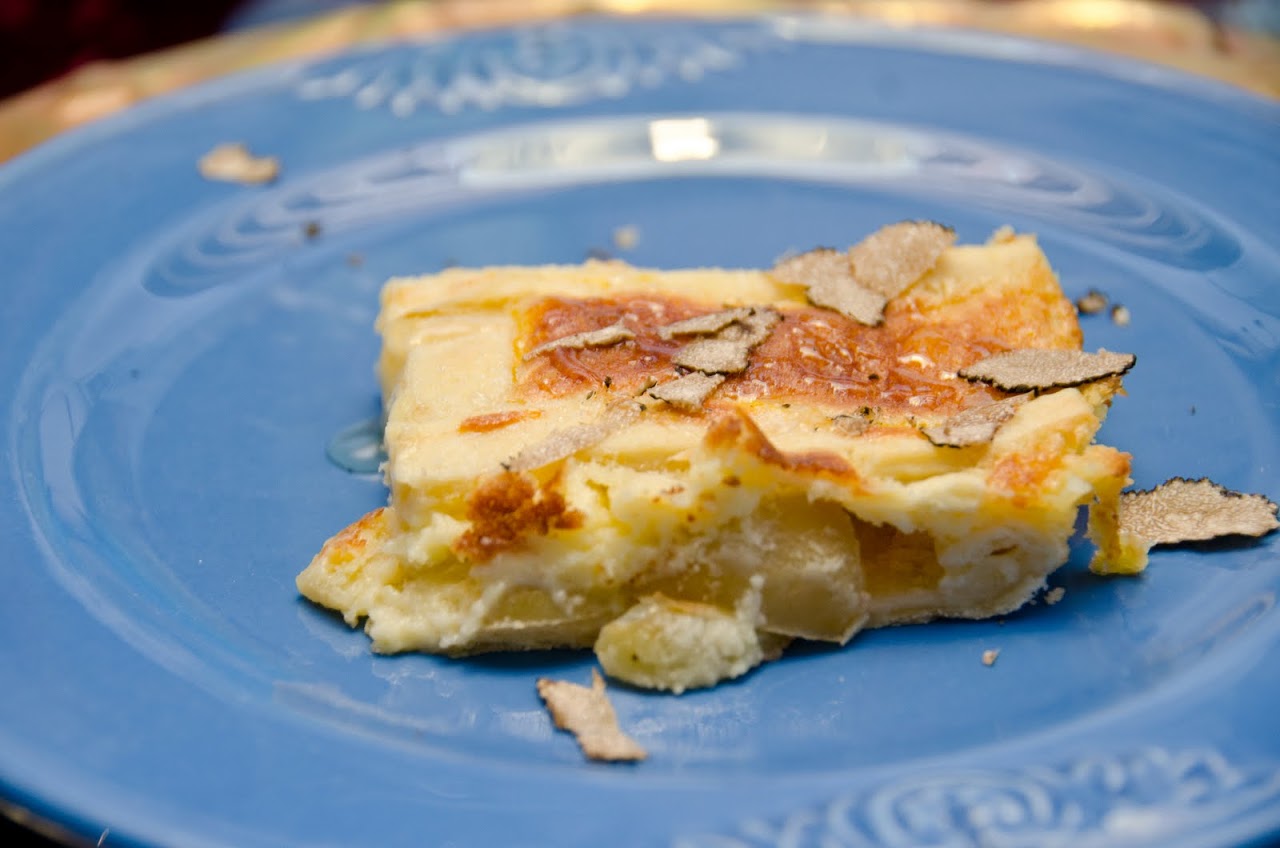
|
Our truffle feast with Giulio and Christina
On cooking with truffles
The best part about truffles is their incredible flavor and taste. The second best part is that they will make even the most amateur cook shine. Seriously, if you have a truffle in your hand, you can't fail.
The trick to a great truffle meal is in simplicity. Truffles have such a strong, wonderful flavor and scent that they shine best in simple starchy preparations, such as with pasta, gnocchi, or risotto, or shaved on top of scrambled eggs or omelettes.
Christina, Giulio's partner, prepared us a sensational truffle meal, ranging from a cheese course with pastry stuffed with cheese, a white bean soup, gnocchi, a cheese popover, omelette, and apple pastry, all with shaved truffles on top. Christina is a gifted cook and I can safely say that the gnocchi she prepared puts all other gnocchi in the world to shame.
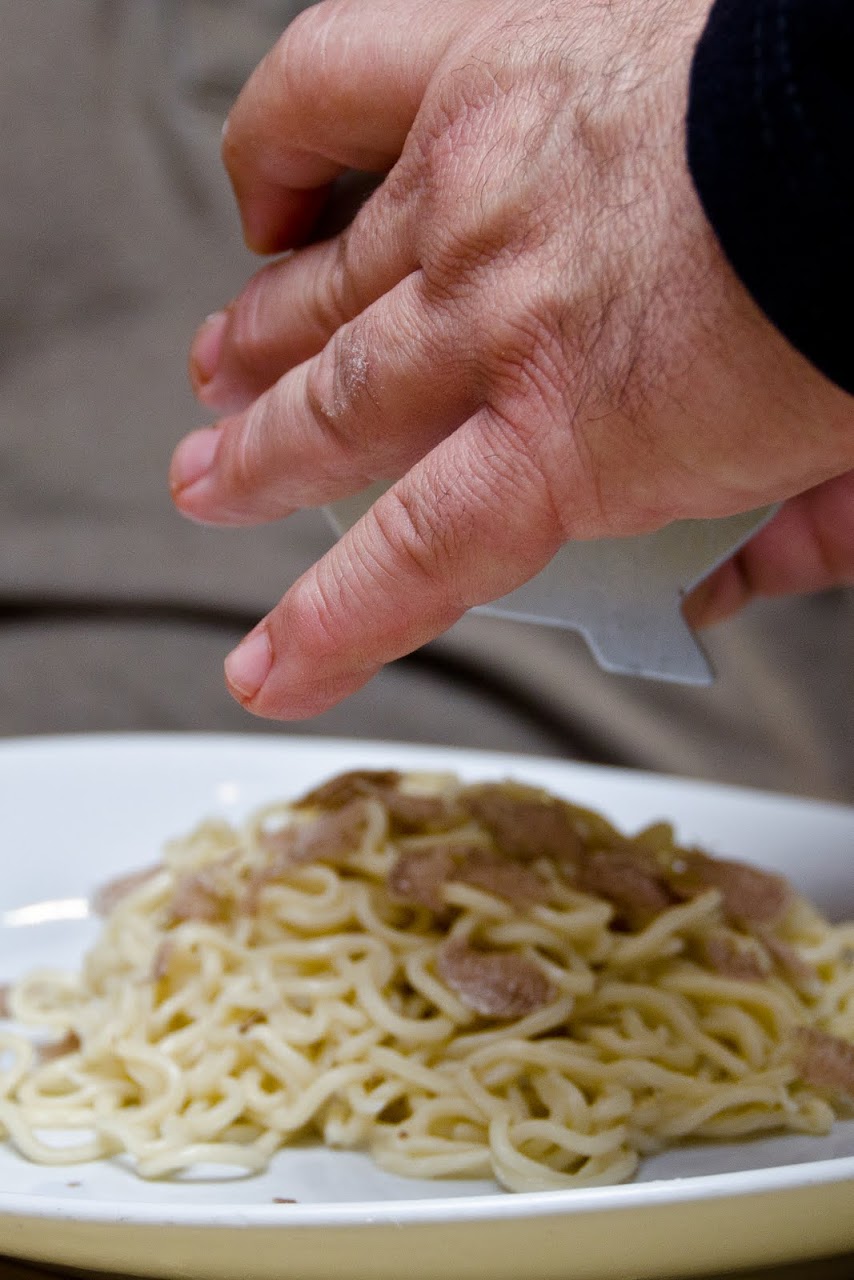
|
|

|
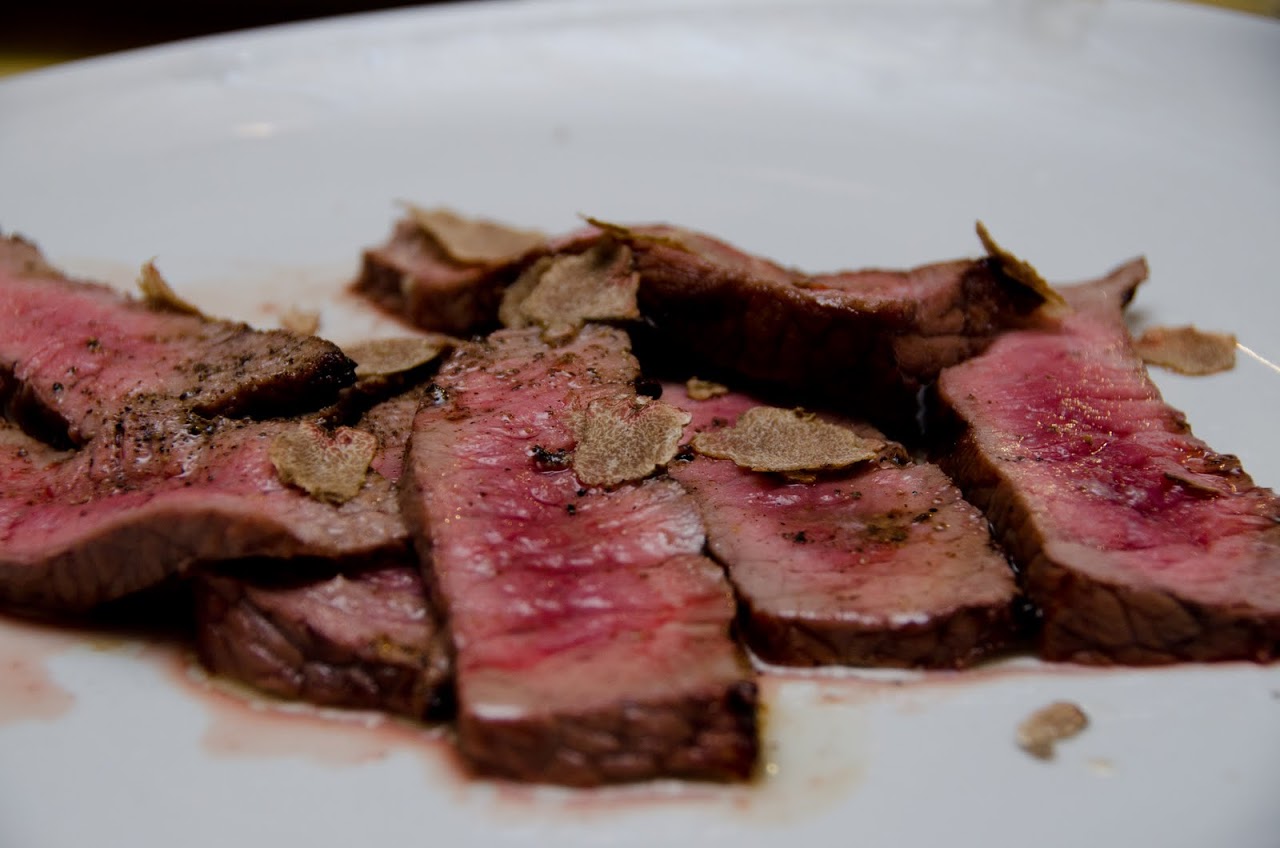
|
Our truffle meal at the Volterra Truffle Festival
At Volterra, we had a slightly different truffle meal, with the white truffles shaved on top of fresh hot pasta and a bit of olive oil (my favorite way to eat truffles), and two different meat dishes with truffles.
If you purchase truffle products, such as truffle salt, truffle oil, or truffle paste, the best method of cooking with these ingredients is simply tossing them in with hot cooked pasta, hot cooked gnocchi, or mashed potatoes. We frequently sprinkle truffle salt purchased in Italy on top of simple roasted vegetables because it elevates those veggies to a new level.

|
Giulio and Edda; views from Giulio's house of olive grove and Florence in the distance
Details on booking a tour with Giulio, Christina, and Edda
If you are in Florence and are interested in eating one of the best meals of your life, not to mention participating in one of the most interesting and unique activities in Italy, head directly over to Giulio's website and book a tour with them. His house is about 20 minutes or so from the Florence city center. We spent about six hours with them and the cost of the tour was 180 Euros per person. And, yes, it might sound expensive but I think it's completely and totally worth every cent if you are passionate about great food . We highly recommend this tour.








